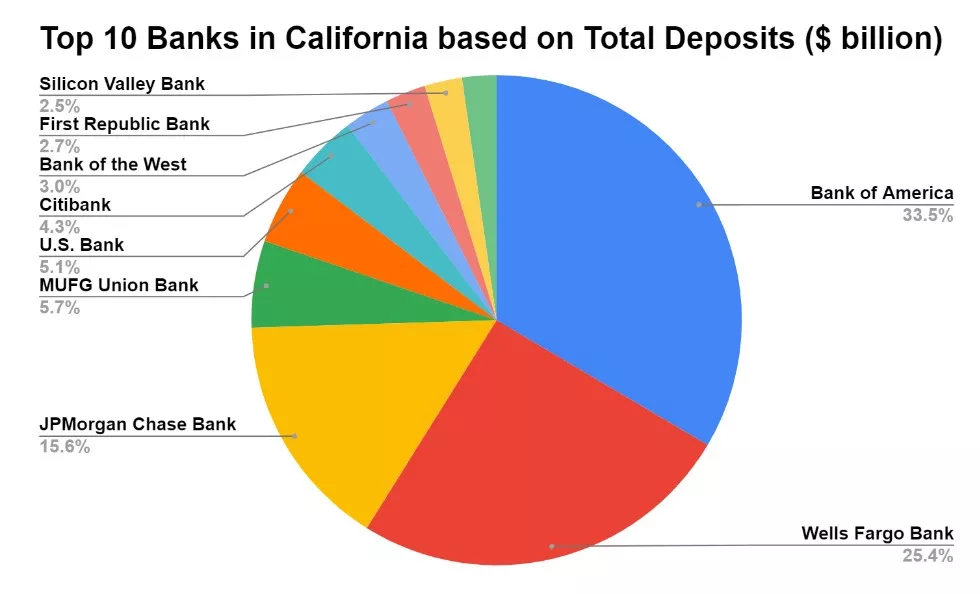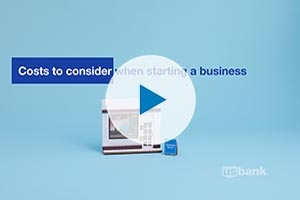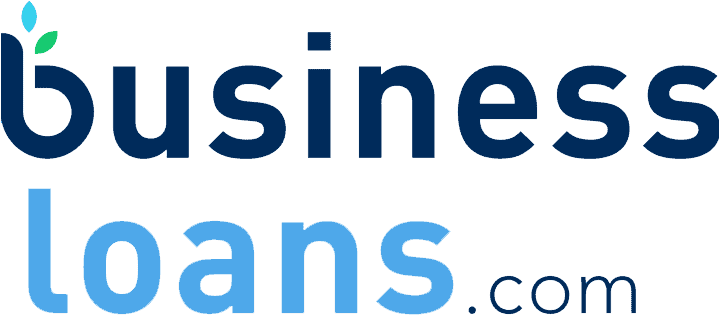Need a business plan? Call now:
Talk to our experts:
- Business Plan for Investors
- Bank/SBA Business Plan
- Operational/Strategic Planning
- L1 Visa Business Plan
- E1 Treaty Trader Visa Business Plan
- E2 Treaty Investor Visa Business Plan
- EB1 Business Plan
- EB2 Visa Business Plan
- EB5 Business Plan
- Innovator Founder Visa Business Plan
- UK Start-Up Visa Business Plan
- UK Expansion Worker Visa Business Plan
- Manitoba MPNP Visa Business Plan
- Start-Up Visa Business Plan
- Nova Scotia NSNP Visa Business Plan
- British Columbia BC PNP Visa Business Plan
- Self-Employed Visa Business Plan
- OINP Entrepreneur Stream Business Plan
- LMIA Owner Operator Business Plan
- ICT Work Permit Business Plan
- LMIA Mobility Program – C11 Entrepreneur Business Plan
- USMCA (ex-NAFTA) Business Plan
- Franchise Business Planning
- Landlord Business Plan
- Nonprofit Start-Up Business Plan
- USDA Business Plan
- Cannabis business plan
- eCommerce business plan
- Online Boutique Business Plan
- Mobile Application Business Plan
- Daycare business plan
- Restaurant business plan
- Food Delivery Business Plan
- Real Estate Business Plan
- Business Continuity Plan
- Buy Side Due Diligence Services
- ICO whitepaper
- ICO consulting services
- Confidential Information Memorandum
- Private Placement Memorandum
- Feasibility study
- Fractional CFO
- How it works
- Business Plan Examples

How to Write a Business Plan to Start a Bank
Published Feb.29, 2024
Updated Apr.23, 2024
By: Alex Silensky
Average rating 5 / 5. Vote count: 3
No votes so far! Be the first to rate this post.

Table of Content
Bank Business Plan Checklist
A bank business plan is a document that describes the bank’s goals, strategies, operations, and financial projections. It communicates the bank’s vision and value proposition to potential investors, regulators, and stakeholders. A SBA business plan should be clear, concise, and realistic. It should also cover all the essential aspects of the bank’s business model.
Here is a checklist of the main sections that you should keep in mind while building a bank business plan:
- Executive summary
- Company description
- Industry analysis
- Competitive analysis
- Service or product list
- Marketing and sales plan
- Operations plan
- Management team
- Funding request
- Financial plan
Sample Business Plan for Bank
The following is a bank business plan template that operates in the USA. This bank business plan example is regarding ABC Bank, and it includes the following sections:
Executive Summary
ABC Bank is a new bank for California’s SMBs and individuals. We offer convenient banking services tailored to our customers’ needs and preferences. We have a large target market with over 500,000 SMBs spending billions on banking services annually. We have the licenses and approvals to operate our bank and raised $20 million in seed funding. We are looking for another $30 million in debt financing.
Our goal is to launch our bank by the end of 2024 and achieve the following objectives in the first five years of operation:
- Acquire 100,000 customers and 10% market share
- Generate $100 million in annual revenue and $20 million in net profit
- Achieve a return on equity (ROE) of 15% and a return on assets (ROA) of 1.5%
- Expand our network to 10 branches and 50 ATMs
- Increase our brand awareness and customer loyalty
Our bank has great potential to succeed and grow in the banking industry. We invite you to read the rest of our microfinance business plan to learn about how to set up a business plan for the bank and how we will achieve our goals.
Industry Analysis
California has one of the biggest and most active banking industries in the US and the world. According to the Federal Deposit Insurance Corp , California has 128 financial institutions, with total assets exceeding $560 billion.
The California banking industry is regulated and supervised by various federal and state authorities. However, they also face several risks and challenges, such as:
- High competition and consolidation
- Increasing regulation and compliance
- Rising customer demand for digital and mobile banking
- Cyberattacks and data breaches
- Environmental and social issues
The banking industry in California is highly competitive and fragmented. According to the FDIC, the top 10 banks and thrifts in California by total deposits as of June 30, 2023, were:

Customer Analysis
We serve SMBs who need local, easy, and cheap banking. We divide our customers into four segments by size, industry, location, and needs:
SMB Segment 1 – Tech SMBs in big cities of California. These are fast-growing, banking-intensive customers. They account for a fifth of our market share and a third of our revenue and are loyal and referable.
SMB Segment 2 – Entertainment SMBs in California’s entertainment hubs. These are high-profile, banking-heavy customers. They make up a sixth of our market and a fourth of our revenue and are loyal and influential.
SMB Segment 3 – Tourism SMBs in California’s tourist spots. These are seasonal, banking-dependent customers. They represent a quarter of our market and a fifth of our revenue and are loyal and satisfied.
SMB Segment 4 – Other SMBs in various regions of California. These are slow-growing, banking-light customers. They constitute two-fifths of our market and a quarter of our revenue and are loyal and stable.
Competitive Analysis
We compete with other banks and financial institutions that offer similar or substitute products and services to our target customers in our target market. We group our competitors into four categories based on their size and scope:
1. National Banks
- Key Players – Bank of America, Wells Fargo, JPMorgan Chase, Citibank, U.S. Bank
- Strengths – Large customer base, strong brand, extensive branch/ATM network, innovation, robust operations, solid financial performance
- Weaknesses – High competition, regulatory costs, low customer satisfaction, high attrition
- Strategies – Maintain dominance through customer acquisition/retention, revenue growth, efficiency
2. Regional Banks
- Key Players – MUFG Union Bank, Bank of the West, First Republic Bank, Silicon Valley Bank, East West Bank
- Strengths – Loyal customer base, brand recognition, convenient branch/ATM network, flexible operations
- Weaknesses – Moderate competition, regulatory costs, customer attrition
- Strategies – Grow market presence through customer acquisition/retention, revenue optimization, efficiency
3. Community Banks
- Key Players – Mechanics Bank, Bank of Marin, Pacific Premier Bank, Tri Counties Bank, Luther Burbank Savings
- Strengths – Small loyal customer base, reputation, convenient branches, ability to adapt
- Weaknesses – Low innovation and technology adoption
- Strategies – Maintain niche identity through customer loyalty, revenue optimization, efficiency
4. Online Banks
- Key Players – Ally Bank, Capital One 360, Discover Bank, Chime Bank, Varo Bank
- Strengths – Large growing customer base, strong brand, no branches, lean operations, high efficiency
- Weaknesses – High competition, regulatory costs, low customer satisfaction and trust, high attrition
- Strategies – Disrupt the industry by acquiring/retaining customers, optimizing revenue, improving efficiency
Market Research
Our market research shows that:
- California has a large, competitive, growing banking market with 128 banks and $560 billion in assets.
- Our target customers are the SMBs in California, which is 99.8% of the businesses and employ 7.2-7.4 million employees.
- Our main competitors are national and regional banks in California that offer similar banking products and services.
We conclude that:
- Based on the information provided in our loan officer business plan , there is a promising business opportunity for us to venture into and establish a presence in the banking market in California.
- We should focus on the SMBs in California, as they have various unmet banking needs, preferences, behavior, and a high potential for growth and profitability.
Operations Plan
Our operational structure and processes form the basis of our operations plan, and they are as follows:
- Location and Layout – We have a network of 10 branches and 50 ATMs across our target area in California. We strategically place our branches and ATMs in convenient and high-traffic locations.
- Equipment and Technology – We use modern equipment and technology to provide our products and services. We have computers and software for banking functions; security systems to protect branches and ATMs; communication systems to communicate with customers and staff; inventory and supplies to operate branches and ATMs.
- Suppliers and Vendors – We work with reliable suppliers and vendors that provide our inventory and supplies like cash, cards, paper, etc. We have supplier management systems to evaluate performance.
- Staff and Management – Our branches have staff like branch managers, customer service representatives, tellers, and ATM technicians with suitable qualifications and experience.
- Policies and Procedures – We have policies for customer service, cash handling, card handling, and paper handling to ensure quality, minimize losses, and comply with regulations. We use various tools and systems to implement these policies.
Management Team
The following individuals make up our management team:
- Earl Yao, CEO and Founder – Earl is responsible for establishing and guiding the bank’s vision, mission, strategy, and overall operations. He brings with him over 20 years of banking experience.
- Paula Wells, CFO and Co-Founder – Paula oversees financial planning, reporting, analysis, compliance, and risk management.
- Mark Hans, CTO – Mark leads our technology strategy, infrastructure, innovation, and digital transformation.
- Emma Smith, CMO – Emma is responsible for designing and implementing our marketing strategy and campaigns.
- David O’kane, COO – David manages the daily operations and processes of the bank ensuring our products and services meet the highest standards of quality and efficiency.
Financial Projections
Our assumptions and drivers form the basis of our financial projections, which are as follows:
Assumptions: We have made the following assumptions for our collection agency business plan :
- Start with 10 branches, 50 ATMs in January 2024
- Grow branches and ATMs 10% annually
- 10,000 customers per branch, 2,000 per ATM
- 5% average loan rate, 2% average deposit rate
- 80% average loan-to-deposit ratio
- $10 average fee per customer monthly
- $100,000 average operating expense per branch monthly
- $10,000 average operating expense per ATM monthly
- 25% average tax rate
Our financial projections are as per our:
- Projected Income Statement
- Projected Cash Flow Statement
- Projected Balance Sheet
- Projected Financial Ratios and Indicators
Select the Legal Framework for Your Bank
Our legal structure and requirements form the basis of our legal framework, which are as follows:
Legal Structure and Entity – We have chosen to incorporate our bank as a limited liability company (LLC) under the laws of California.
Members – We have two members who own and control our bank: Earl Yao and Paula Wells, the founders and co-founders of our bank.
Manager – We have appointed Mark Hans as our manager who oversees our bank’s day-to-day operations and activities.
Name – We have registered our bank’s name as ABC Bank LLC with the California Secretary of State. We have also obtained a trademark registration for our name and logo.
Registered Agent – We have designated XYZ Registered Agent Services LLC as our registered agent authorized to receive and handle legal notices and documents on behalf of our bank.
Licenses and Approvals – We have obtained the necessary licenses and approvals to operate our bank in California, including:
- Federal Deposit Insurance Corporation (FDIC) Insurance
- Federal Reserve System Membership
- California Department of Financial Protection and Innovation (DFPI) License
- Business License
- Employer Identification Number (EIN)
- Zoning and Building Permits
Legal Documents and Agreements – We have prepared and signed the necessary legal documents and agreements to form and operate our bank, including:
- Certificate of Formation
- Operating Agreement
- Membership Agreement
- Loan Agreement
- Card Agreement
- Paper Agreement
Keys to Success
We analyze our market, customers, competitors, and industry to determine our keys to success. We have identified the following keys to success for our bank.
Customer Satisfaction
Customer satisfaction is vital for any business, especially a bank relying on loyalty and referrals. It is the degree customers are happy with our products, services, and interactions. It is influenced by:
- Product and service quality – High-quality products and services that meet customer needs and preferences
- Customer service quality – Friendly, professional, and helpful customer service across channels
- Customer experience quality – Convenient, reliable, and secure customer access and transactions
We will measure satisfaction with surveys, feedback, mystery shopping, and net promoter scores. Our goal is a net promoter score of at least 8.
Operational Efficiency
Efficiency is key in a regulated, competitive environment. It is using resources and processes effectively to achieve goals and objectives. It is influenced by:
- Resource optimization – Effective and efficient use and control of capital, staff, and technology
- Process improvement – Streamlined, standardized processes measured for performance
- Performance management – Managing financial, operational, customer, and stakeholder performance
We will measure efficiency with KPIs, metrics, dashboards, and operational efficiency ratios. Our goal is an operational efficiency ratio below 50%.
Partner with OGSCapital for Your Bank Business Plan Success
Highly efficient service.
Highly Efficient Service! I am incredibly happy with the outcome; Alex and his team are highly efficient professionals with a diverse bank of knowledge.
Are you looking to hire business plan writers to start a bank business plan? At OGSCapital, we can help you create a customized and high-quality bank development business plan to meet your goals and exceed your expectations.
We have a team of senior business plan experts with extensive experience and expertise in various industries and markets. We will conduct thorough market research, develop a unique value proposition, design a compelling financial model, and craft a persuasive pitch deck for your business plan. We will also offer you strategic advice, guidance, and access to a network of investors and other crucial contacts.
We are not just a business plan writing service. We are a partner and a mentor who will support you throughout your entrepreneurial journey. We will help you achieve your business goals with smart solutions and professional advice. Contact us today and let us help you turn your business idea into a reality.
Frequently Asked Questions
How do I start a small bank business?
To start a small bank business in the US, you need to raise enough capital, understand how to make a business plan for the bank, apply for a federal or state charter, register your bank for taxes, open a business bank account, set up accounting, get the necessary permits and licenses, get bank insurance, define your brand, create your website, and set up your phone system.
Are banks profitable businesses?
Yes, banks are profitable businesses in the US. They earn money through interest on loans and fees for other services. The commercial banking industry in the US has grown 5.6% per year on average between 2018 and 2023.
Download Bank Business Plan Sample in pdf
OGSCapital’s team has assisted thousands of entrepreneurs with top-rate business plan development, consultancy and analysis. They’ve helped thousands of SME owners secure more than $1.5 billion in funding, and they can do the same for you.

Ice Vending Machine Business Plan

OGScapital at the National Citizenship and Immigration Conference

How to Start a Plumbing Business in 2024: A Detailed Guide

Vegetable Farming Business Plan

Trading Business Plan

How To Write A Textile Manufacturing Business Plan

Any questions? Get in Touch!
We have been mentioned in the press:
Leave a Reply Cancel reply
Your email address will not be published. Required fields are marked *
Save my name, email, and website in this browser for the next time I comment.
Search the site:

Bank Business Plan Template
Written by Dave Lavinsky

Bank Business Plan
Over the past 20+ years, we have helped over 500 entrepreneurs and business owners create business plans to start and grow their banks.
If you’re unfamiliar with creating a bank business plan, you may think creating one will be a time-consuming and frustrating process. For most entrepreneurs it is, but for you, it won’t be since we’re here to help. We have the experience, resources, and knowledge to help you create a great business plan.
In this article, you will learn some background information on why business planning is important. Then, you will learn how to write a bank business plan step-by-step so you can create your plan today.
Download our Ultimate Business Plan Template here >
What Is a Bank Business Plan?
A business plan provides a snapshot of your bank as it stands today, and lays out your growth plan for the next five years. It explains your business goals and your strategies for reaching them. It also includes market research to support your plans.
Why You Need a Business Plan for Your Bank Business
If you’re looking to start a bank or grow your existing bank, you need a business plan. A business plan will help you raise funding, if needed, and plan out the growth of your bank to improve your chances of success. Your bank business plan is a living document that should be updated annually as your company grows and changes.
Sources of Funding for Banks
With regards to funding, the main sources of funding for a bank are personal savings, credit cards, bank loans, and angel investors. When it comes to bank loans, banks will want to review your business plan and gain confidence that you will be able to repay your loan and interest. To acquire this confidence, the loan officer will not only want to ensure that your financials are reasonable, but they will also want to see a professional plan. Such a plan will give them the confidence that you can successfully and professionally operate a business. Personal savings and bank loans are the most common funding paths for banks.
Finish Your Business Plan Today!
How to write a business plan for a bank.
If you want to start a bank or expand your current one, you need a business plan. The guide below details the necessary information for how to write each essential component of your bank business plan.
Executive Summary
Your executive summary provides an introduction to your business plan, but it is normally the last section you write because it provides a summary of each key section of your plan.
The goal of your executive summary is to quickly engage the reader. Explain to them the kind of bank you are running and the status. For example, are you a startup, do you have a bank that you would like to grow, or are you operating a chain of banks?
Next, provide an overview of each of the subsequent sections of your plan.
- Give a brief overview of the bank industry.
- Discuss the type of bank you are operating.
- Detail your direct competitors. Give an overview of your target customers.
- Provide a snapshot of your marketing strategy. Identify the key members of your team.
- Offer an overview of your financial plan.
Company Overview
In your company overview, you will detail the type of bank you are operating.
For example, you might specialize in one of the following types of banks:
- Commercial bank : this type of bank tends to concentrate on supporting businesses. Both large corporations and small businesses can turn to commercial banks if they need to open a checking or savings account, borrow money, obtain access to credit or transfer funds to companies in foreign markets.
- Credit union: this type of bank operates much like a traditional bank (issues loans, provides checking and savings accounts, etc.) but banks are for-profit whereas credit unions are not. Credit unions fall under the direction of their own members. They tend to serve people affiliated with a particular group, such as people living in the same area, low-income members of a community or armed service members. They also tend to charge lower fees and offer lower loan rates.
- Retail bank: retail banks can be traditional, brick-and-mortar brands that customers can access in-person, online, or through their mobile phones. They also offer general public financial products and services such as bank accounts, loans, credit cards, and insurance.
- Investment bank: this type of bank manages the trading of stocks, bonds, and other securities between companies and investors. They also advise individuals and corporations who need financial guidance, reorganize companies through mergers and acquisitions, manage investment portfolios or raise money for certain businesses and the federal government.
In addition to explaining the type of bank you will operate, the company overview needs to provide background on the business.
Include answers to questions such as:
- When and why did you start the business?
- What milestones have you achieved to date? Milestones could include the number of clients served, the number of clients with positive reviews, reaching X number of clients served, etc.
- Your legal business Are you incorporated as an S-Corp? An LLC? A sole proprietorship? Explain your legal structure here.
Industry Analysis
In your industry or market analysis, you need to provide an overview of the bank industry.
While this may seem unnecessary, it serves multiple purposes.
First, researching the bank industry educates you. It helps you understand the market in which you are operating.
Secondly, market research can improve your marketing strategy, particularly if your analysis identifies market trends.
The third reason is to prove to readers that you are an expert in your industry. By conducting the research and presenting it in your plan, you achieve just that.
The following questions should be answered in the industry analysis section of your bank business plan:
- How big is the bank industry (in dollars)?
- Is the market declining or increasing?
- Who are the key competitors in the market?
- Who are the key suppliers in the market?
- What trends are affecting the industry?
- What is the industry’s growth forecast over the next 5 – 10 years?
- What is the relevant market size? That is, how big is the potential target market for your bank? You can extrapolate such a figure by assessing the size of the market in the entire country and then applying that figure to your local population.
Customer Analysis
The customer analysis section of your bank business plan must detail the customers you serve and/or expect to serve.
The following are examples of customer segments: individuals, small businesses, families, and corporations.
As you can imagine, the customer segment(s) you choose will have a great impact on the type of bank you operate. Clearly, corporations would respond to different marketing promotions than individuals, for example.
Try to break out your target customers in terms of their demographic and psychographic profiles. With regards to demographics, including a discussion of the ages, genders, locations, and income levels of the potential customers you seek to serve.
Psychographic profiles explain the wants and needs of your target customers. The more you can recognize and define these needs, the better you will do in attracting and retaining your customers.
Finish Your Bank Business Plan in 1 Day!
Don’t you wish there was a faster, easier way to finish your business plan?
With Growthink’s Ultimate Business Plan Template you can finish your plan in just 8 hours or less!
Competitive Analysis
Your competitive analysis should identify the indirect and direct competitors your business faces and then focus on the latter.
Direct competitors are other banks.
Indirect competitors are other options that customers have to purchase from that aren’t directly competing with your product or service. This includes trust accounts, investment companies, or the stock market. You need to mention such competition as well.
For each such competitor, provide an overview of their business and document their strengths and weaknesses. Unless you once worked at your competitors’ businesses, it will be impossible to know everything about them. But you should be able to find out key things about them such as
- What types of customers do they serve?
- What type of bank are they?
- What is their pricing (premium, low, etc.)?
- What are they good at?
- What are their weaknesses?
With regards to the last two questions, think about your answers from the customers’ perspective. And don’t be afraid to ask your competitors’ customers what they like most and least about them.
The final part of your competitive analysis section is to document your areas of competitive advantage. For example:
- Will you provide loans and retirement savings accounts?
- Will you offer products or services that your competition doesn’t?
- Will you provide better customer service?
- Will you offer better pricing?
Think about ways you will outperform your competition and document them in this section of your plan.
Marketing Plan
Traditionally, a marketing plan includes the four P’s: Product, Price, Place, and Promotion. For a bank business plan, your marketing strategy should include the following:
Product : In the product section, you should reiterate the type of bank company that you documented in your company overview. Then, detail the specific products or services you will be offering. For example, will you provide savings accounts, auto loans, mortgage loans, or financial advice?
Price : Document the prices you will offer and how they compare to your competitors. Essentially in the product and price sub-sections of your plan, you are presenting the products and/or services you offer and their prices.
Place : Place refers to the site of your bank. Document where your company is situated and mention how the site will impact your success. For example, is your bank located in a busy retail district, a business district, a standalone office, or purely online? Discuss how your site might be the ideal location for your customers.
Promotions : The final part of your bank marketing plan is where you will document how you will drive potential customers to your location(s). The following are some promotional methods you might consider:
- Advertise in local papers, radio stations and/or magazines
- Reach out to websites
- Distribute flyers
- Engage in email marketing
- Advertise on social media platforms
- Improve the SEO (search engine optimization) on your website for targeted keywords
Operations Plan
While the earlier sections of your business plan explained your goals, your operations plan describes how you will meet them. Your operations plan should have two distinct sections as follows.
Everyday short-term processes include all of the tasks involved in running your bank, including reconciling accounts, customer service, accounting, etc.
Long-term goals are the milestones you hope to achieve. These could include the dates when you expect to sign up your Xth customer, or when you hope to reach $X in revenue. It could also be when you expect to expand your bank to a new city.
Management Team
To demonstrate your bank’s potential to succeed, a strong management team is essential. Highlight your key players’ backgrounds, emphasizing those skills and experiences that prove their ability to grow a company.
Ideally, you and/or your team members have direct experience in managing banks. If so, highlight this experience and expertise. But also highlight any experience that you think will help your business succeed.
If your team is lacking, consider assembling an advisory board. An advisory board would include 2 to 8 individuals who would act as mentors to your business. They would help answer questions and provide strategic guidance. If needed, look for advisory board members with experience in managing a bank or successfully running a small financial advisory firm.
Financial Plan
Your financial plan should include your 5-year financial statement broken out both monthly or quarterly for the first year and then annually. Your financial statements include your income statement, balance sheet, and cash flow statements.
Income Statement
An income statement is more commonly called a Profit and Loss statement or P&L. It shows your revenue and then subtracts your costs to show whether you turned a profit or not.
In developing your income statement, you need to devise assumptions. For example, will you see 5 clients per day, and/or offer sign up bonuses? And will sales grow by 2% or 10% per year? As you can imagine, your choice of assumptions will greatly impact the financial forecasts for your business. As much as possible, conduct research to try to root your assumptions in reality.
Balance Sheets
Balance sheets show your assets and liabilities. While balance sheets can include much information, try to simplify them to the key items you need to know about. For instance, if you spend $50,000 on building out your bank, this will not give you immediate profits. Rather it is an asset that will hopefully help you generate profits for years to come. Likewise, if a lender writes you a check for $50,000, you don’t need to pay it back immediately. Rather, that is a liability you will pay back over time.
Cash Flow Statement
Your cash flow statement will help determine how much money you need to start or grow your business, and ensure you never run out of money. What most entrepreneurs and business owners don’t realize is that you can turn a profit but run out of money and go bankrupt.
When creating your Income Statement and Balance Sheets be sure to include several of the key costs needed in starting or growing a bank:
- Cost of furniture and office supplies
- Payroll or salaries paid to staff
- Business insurance
- Other start-up expenses (if you’re a new business) like legal expenses, permits, computer software, and equipment
Attach your full financial projections in the appendix of your plan along with any supporting documents that make your plan more compelling. For example, you might include your bank location lease or a list of accounts and loans you plan to offer.
Writing a business plan for your bank is a worthwhile endeavor. If you follow the template above, by the time you are done, you will truly be an expert. You will understand the bank industry, your competition, and your customers. You will develop a marketing strategy and will understand what it takes to launch and grow a successful bank.
Bank Business Plan Template FAQs
What is the easiest way to complete my bank business plan.
Growthink's Ultimate Business Plan Template allows you to quickly and easily write your bank business plan.
How Do You Start a Bank Business?
Starting a bank business is easy with these 14 steps:
- Choose the Name for Your Bank Business
- Create Your Bank Business Plan
- Choose the Legal Structure for Your Bank Business
- Secure Startup Funding for Your Bank Business (If Needed)
- Secure a Location for Your Business
- Register Your Bank Business with the IRS
- Open a Business Bank Account
- Get a Business Credit Card
- Get the Required Business Licenses and Permits
- Get Business Insurance for Your Bank Business
- Buy or Lease the Right Bank Business Equipment
- Develop Your Bank Business Marketing Materials
- Purchase and Setup the Software Needed to Run Your Bank Business
- Open for Business
Don’t you wish there was a faster, easier way to finish your Bank business plan?
OR, Let Us Develop Your Plan For You
Since 1999, Growthink has developed business plans for thousands of companies who have gone on to achieve tremendous success. Click here to see how a Growthink business plan consultant can create your business plan for you.
Other Helpful Business Plan Articles & Templates


Bank Business Plan [Sample Template]
By: Author Tony Martins Ajaero
Home » Business ideas » Financial Service Industry » Bank

Are you about starting a bank? If YES, here is a complete sample commercial bank business plan template & feasibility report you can use for FREE .
Okay, so we have considered all the requirements for starting a bank . We also took it further by analyzing and drafting a sample bank business marketing plan template backed up by actionable guerrilla marketing ideas for banks. So let’s proceed to the business planning section.
Why Start a Bank?
Starting your own bank is a huge step and needs a good deal of planning and preparation. Extensive information about the founders, the business plan, senior management team, finances, capital adequacy, risk management infrastructure, and other relevant factors must be provided to the appropriate authorities.
There are also a number of legal regulations and requirements that must be fulfilled in order to start your own bank. Some of these requirements are dependent upon the regulations in the niche you wish to establish your bank.
As hard as the task of starting a bank can be, anyone who wishes to start their own bank is able to enjoy the many benefits of making a major investment. Although the process of registering and setting up a bank involves lengthy planning and a relatively complex licensing procedure, once it is completed, the owner is able to conduct financial activity in their chosen niche.
Note that the very first step when starting your bank is to choose the niche and type of activity which you wish to engage in. Before you obtain the necessary licensing from the financial regulatory body, it is very crucial you identify whether you wish to specialize in investment banking or trade finance.
The advantages of owning your own bank are huge and include the potential to make large profits during a short period.
Note that if you know your target market and your target market’s specific requirements, you will be in a better position to provide a range of attractive services. To successfully start and run this business, it is advised you seek the help of a professional consultancy firm.
Through the advice and guidance of expert consultants, you will be able to establish a banking institution in a professional manner. Also have it in mind that any proposed bank must first receive the approval of a federal or state banking charter.
Before granting a charter, the chartering regulator must determine that the applicant bank has a reasonable chance for success and will operate in a safe and sound manner.
Then, the proposed bank must obtain approval for deposit insurance from the Federal Deposit Insurance Corporation. Additional approvals are required from the Federal Reserve if, at formation, a holding company would control the new bank or a state-chartered bank would become a member of the Federal Reserve.
A Sample Bank Business Plan Template
1. industry overview.
According to global banking industry reports, part of the broad financial services market, bank credit remain the leading market segment, with around 60% of the overall market in terms of value. Statistics has shown that the EU is the largest regional market, with over 57% of the global market.
Note that the economic recession that began in 2008 affected the industry and resulted in the crash of several financial institutions, which in turn led to the examination of practices and deployment of new guidelines in the banking industry.
But reports have it that the sector is beginning to rebound, and cross-border investment is one area contributing to recovery, with a few big banks dominating certain national markets. Advantages of cross-border practices include economies of scale, though institutions must compete with established domestic banks.
It’s very important to state that in the world retail banking and bank lending sectors, mortgage lending represents the leading market segment, accounting for almost 76% of the overall market in terms of value. Other key segments of the banking industry include private banking and payments business.
Note that in the US banking sector, experts believe that market growth will be driven by cross-border expansion due to the breaking down of obstacles to cross-border investment.
Competition between international banks is also expected to aid market growth along with the introduction of new products, reduction of costs and launching of new services. Report also has it that mobile and internet banking are becoming increasingly intertwined, especially due to the advent and success of smartphones. This provides consumers with convenient access to internet banking.
Have it in mind that the global mobile internet market will continue to drive the expansion of the mobile banking services sector. Report has shown that banking institutions are responding by launching downloadable applications and encouraging consumers to bank online and through mobile devices by rolling out mobile and internet banking services.
2. Executive Summary
Apex Investment Bank, LLC (AIB LLC) is a Portland Oregon based investment bank that will provide investment packages, underwriting, proprietary trading, and investment management for its investors. Our objective at AIB LLC is to create value for owners, employees, and investors through the establishment of an investment bank designed for the Third Generation.
This Generation is explicitly defined in the ground breaking research effort by Lincoln Swan & Co., Inc. and Netley Strategic business Group as a stage in the investment industry requiring a special set of skills for success. We at AIB LLC have leveraged this study, with more other studies, and perhaps most importantly, our own experience in the industry, to define a plan for the success of our clients.
Portland’s location is beneficial for several industries. Relatively low energy cost, accessible resources, north–south and east–west Interstates, international air terminals, large marine shipping facilities, and both west coast intercontinental railroads are all economic advantages.
AIB LLC will be structured as a Limited Liability Company with excellent plans to make use of industry research performed by one of our founding entrepreneurs, Solomon Drane during his professional career in investment management research.
Within the past three years, Solomon Drane has conducted research visits at the investment offices of over 80 companies. He has also held countless meetings with key investment professionals from around the globe either in person or via telephone conference.
We at AIB LLC plan to offer our clients the opportunity to assume minority ownership positions in exchange for contributions to our operating capital and for providing seed assets to establish the investment products described herein.
It is very important to state that this document alone does not create an offer of any type, nor does it give any guarantee, financial, or otherwise. This is a well detailed business plan designed to strategically dictate AIB LLC plans and visions for the next five years. It is open to correction or improvement within or after the specified time.
3. Our Products and Services
We at AIB LLC will provide investment packages and underwrite securities for sale to private investors and the general public among companies that are seeking to raise capital. At the onset of operations, we at AIB LLC will solely seek to sell debt instruments on behalf of our customers.
The standard fee for this service is 8% of the total underwritten instrument. We at AIB LLC will also solicit capital from accredited investors with the purpose of making use of this capital to make investment marketable securities. Our goal is to generate compounded annual returns of 30% to 35% per year on capital invested into our Bank’s portfolio holdings. We also plan to make sure that our management retains a 25% ownership interest at AIB LLC.
4. Our Mission and Vision Statement
- Our vision at AIB LLC is to develop into a large scale investment bank that will provide underwriting income, advisory income, dividend income, capital appreciation, and interest income to investors.
- Our mission at AIB LLC is to ensure that investment decisions are implemented quickly and efficiently across all portfolios, to also make sure a trading research and rotation is used to avoid any type of systematic advantage or disadvantage an account may experience.
Our Business Structure
We at AIB LLC understand that the strength of our management team and board of directors is perhaps the most important factor in starting a bank and effectively providing for its future success. We also found out through our detailed research that for a new bank charter to be approved for us, all our senior management team must be experienced bankers with a history of relevant success.
The more reason we made sure our board of directors are made up of individuals with successful careers in business, banking, and other fields, and have representation in the necessary disciplines.
We also understand the role of the board and management as investors and how important they are. Regulators and other investors will look to the investment of these directors and senior officers as an important sign of their commitment to the bank.
We also understand that the typical investment bank is operated on a rigid, strict hierarchy, than most corporate or financial institutions. We have taken our time to analyse our market and what we need that is why we have decided to start with the listed workforce.
Managing director
- Senior vice president
Vice president
Investment Banking Associate
Investment Banking Analyst
- Marketing manager
- Security man
5. Job Roles and Responsibilities
- Broaden and/or enhance the bank’s industry coverage,
- Will partner with the firm’s leadership to grow and build the bank
- Will tirelessly work to deliver superior results to the firms’ clients
- Participate as a key member of the senior leadership team, contributing to the strategy, growth and success of the firm
- Lead efforts on sell-side and buy-side acquisition assignments, refinancing, recapitalization and restructuring assignments
- Interact seamlessly with prospects, clients, acquirors, investors and attorneys on all aspects of a M&A deal and/or capital raise
- Direct a team of junior bankers to support all elements of deal sourcing and execution.
Senior Vice president
- Involved in executing and managing equity offerings that will include the drafting and structuring of material, logistics management, issue identification, its analysis and the resolution.
- Responsible for mergers and acquisitions and manages the creation of buyers list, their contacts, drafting the relevant material, financial analysis and private equity placement.
- Researches and identify deal opportunities by formulating and issuing factual financial analyses and creating different kinds of financial plans.
- Involved in pitching or selling the organization’s products and services to new clients and may be involved in other projects as well.
- May participate in due diligence meetings with non-proprietary or proprietary investment managers and create relevant call reports that include their opinions.
- May be involved in analyzing the investment products and screening them by making effective use of a variety of investment data and the relevant software applications
- Monitors the investment products and their performance.
- Analyses the relevant statistics to evaluate the appropriateness of the product.
- Manages relationships with the investment management organizations and regularly gets him/her updated by getting valuable information from them.
- Attends industry conferences and training sessions so as to present innovative ideas to clients
- Responsible for providing leadership and overseeing the work of the subordinate members.
- Call on prospective clients such as privately held business owners, publicly traded companies and private equity firms.
- Conceptualize, organize and deliver new business presentations.
- Lead transaction implementation across industry groups.
- Manage, educate and develop banking analysts and associates.
- Develop marketing and new business presentations.
- Monitor financial analysis and modeling.
- Perform and analyze industry research.
- Create client presentations, proposals, engagement letters term sheets, legal agreements and offer memorandums.
- Create and foster client relationships.
- Managing and assisting in the preparation of financial models and business valuations
- Creating client marketing presentations
- Attending client meetings
- Conducting industry and company-specific due diligence related to transactions
- Drafting memoranda for sale assignments
- Assisting in the preparation of fairness opinions
- Attending drafting sessions for equity offerings
- Creating marketing materials for our equity sales organization
- Assisting in the development and continued cultivation of client relationships
- Developing an understanding of the underlying trends that affect equity capital markets.
- Development of various types of financial models to value debt and equity for mergers, acquisitions, and capital raising transactions.
- Perform various valuation methods: comparable companies, precedents, and DCF.
- Develop recommendations for product offerings, private equity transactions, mergers and acquisitions, and valuations.
- Conduct preparation and review of materials used in the financing of clients, including investment memoranda, management presentations and pitchbooks.
- Develop relationships with new and existing clients in order to expand the business.
- Perform due diligence, research, analysis, and documentation of live transactions.
- Create presentations for client portfolios.
Sales and Marketing director
- In charge of organizing external research and coordinating all the internal sources of information to retain the organizations’ best customers and attract new ones
- Expected to understand, prioritizes, and reaches out to new partners, and business opportunities et al
- Tasked with understanding development opportunities; follows up on development leads and contacts
- It’s the job of the director to supervise implementation, advocate for the customer’s needs, and communicate with clients
- Keep all customer contact and information
- Represents the company in strategic meetings
- Aid to increase sales and growth for the business
- Keep note and make sure the toiletries and supplies don’t run out of stock
- Ensures that both the interior and exterior of the firm are always clean
- Handles any other duty as assigned by the Vice president
Security guard
- The security guard is in charge of protecting the firm and its environs
- Also controls traffic and organize parking
- He is Tasked with giving security tips when necessary
- Should also Patrol around the building on a 24 hours basis
- It’s expected to give security reports weekly
6. SWOT Analysis
We at AIB LLC understand that the very first step of starting a new bank is to build a strong business and strategic plan. We believe that this plan must consider the proposed business of the new bank, its financial and managerial resources and prospects for success, the convenience and needs of the public, and the effect of competition.
This strong business and strategic plan supported by detailed financial projections and appropriate policies and procedures form the basis of successful regulatory applications of a bank charter.
We at AIB LLC hope to establish a lucrative investment bank that will serve the needs of our clients and also bring in profits for our founders. We took time to conduct a detailed SWOT analysis for AIB LLC. The details and results are explained below.
According to our SWOT analysis, our strength at AIB LLC rests on the expertise and experience of our management team. With the experience and discipline of our team, our SWOT analysis predict we can build a robust company profile even before bidding for investment banking contracts from corporate organizations.
As the investment banking industry expands and grows in revenue and market reach, so does the level of competition in the industry. Due to the very low barriers to entry, any individual or business may register itself as an investment bank after completing the proper examinations and filings.
- Opportunities
The banking sector has become one of the fastest growing business sectors in the U.S. economy. Note that computerized technologies allow financial firms to operate advisory, investment banking, and brokerage services anywhere in the country.
In time past, most financial firms needed to be within a close proximity to Wall Street in order to provide their clients the highest level of service. This is no longer the case as a firm can access almost every facet of the financial markets through Internet connections and specialized trading and investment management software.
According to our SWOT analysis, the risks we will be facing include;
- Market Risk – A high correlation exists between the growth rate of the investment industry and the performance of equity markets. While evidence suggests an attractive environment for equities in the future, no forecasts can be made with absolute certainty.
- Performance Risk – It is understood that our products are measured by their performance. Although the goal is to achieve competitive performance over three to five-year time periods, short-term periods may result in underperformance based on the critical measures.
- Business/Operating Risk – Beyond the third full year of operation, assets under management must produce revenues that will be sufficient to support operations in their entirety. Otherwise our options will be to acquire additional funding or to reduce costs.
7. MARKET ANALYSIS
- Market Trend
Experts believe this industry will continue to experience growth in all parts of the world especially in developed countries such as united states of America, Canada, United Kingdom , Germany, Australia, South Korea, Japan, China et al.
According to industry data, the industry brings in a whooping sum of $105 billion annually with an annual growth rate projected at -13.0 percent within 2011 and 2016. Although the number of industry activities has not deviated dramatically over the five-year period, the share of revenue that each activity accounts for has undergone substantial volatility.
It is believed that the products and services in the Investment industry differ considerably on a company-by-company basis, largely depending on operator size.
It’s very important to state that small and medium size investment banks target niche industries and small companies and depend more heavily on traditional investment banking activities such as underwriting and financial advisory. Alternatively, major industry players earn a substantial share of revenue from trading activities.
Note that one factor that attract entrepreneurs to the investment banking business despite the huge capital requirements and the high risk is that the venture is profitable. We have made plans to always stay ahead of industry trend and also to get the required certifications and license and also meet the standard capitalization for an investment bank in the United States.
8. Our Target Market
Our target market at AIB LLC will be greatly dependent on the phase of our product in its development cycle. Have it in mind that most of the marketing opportunities will happen beyond the first year of product development. But we remain very certain that some initial opportunities do exist.
For instance, our bank can utilize its transfer agent’s distribution services, which would put the product in a highly visible online platform. Note that extra opportunities include marketing to programs that invest specifically in “emerging managers.”
We at AIB LLC also believe that the high net worth and retail marketplace can be accessed to a limited degree, even in the early stages, through similar innovative opportunities and already-established relationships with clients. Just like manufacturing organizations, investment businesses are expected to develop products to provide to their customers.
Our hallmark product offering will be our well designed Market Equity strategy, an investment product offering based on the evidence supporting investor’s desires to outperform the overall market via a single, diversified vehicle and to avoid the need to create complex investment structures.
Our competitive advantage
Our Competitive Advantage at AIB LLC is specified in the three P’s commonly associated with investment firms: People, Process, and Performance. The first two determine the latter. Although our business plan highlights many areas (market research, financial projections, etc.), we believe there are two areas that will surely determine the level of success achieved by AIB LLC.
We believe that the very first is the people. Bright, energetic, talented, and knowledgeable individuals compose the core of the team we have at AIB LLC. We were able to note from our rigorous research that the most qualified investment professionals are attracted to efficient investment banks that are free from bureaucracy. Process is the second most important element of our bank.
We have made sure cutting-edge research will be provided in support of our portfolio management process. The implementation of our process is maximized by outsourcing virtually all functions not related to portfolio management and research, thereby making full use of the bank’s human capital.
9. SALES AND MARKETING STRATEGY
We at AIB LLC understand that the key to marketing an investment product is to create a successful and attractive product, develop a pattern of success, and show that pattern can be repeated in the future. After that, successful products should be aggressively marketed if capacity to manage additional assets exists.
Although a three to five-year period tend to seem like a century compared to the technology world, it is really quite reasonable considering the fact that private equity investors in limited partnership vehicles are generally satisfied with a 10-year waiting period that exists prior to a return of their capital investment.
AIB hallmark investment product will be the AIB Total Market Equity strategy and will be initially offered through an SEC registered mutual fund. Technological advancements also permit for other economically feasible distribution channels such as separately managed portfolios for large account sizes.
Sources of Income
We believe that our primary income at AIB LLC will come from providing our clients with investment packages, securities underwriting and advisory services in regards to mergers and acquisitions. AIB LLC will earn substantial fees for the equity and debt instruments that it underwrites and then resells to the general public.
We also believe that we will engage primarily in debt instruments among middle market companies that will be sold on a best efforts basis. This will place minimal risk on our capital reserve.
We will also earn substantial per hour management and deal fees regarding advisory services for mergers and acquisition operations. We also plan to make investments directly into marketable securities and hedge funds that specialize in specific areas of trading.
Our intention is to develop a number of trading strategies including options trading, LEAPs trading, long position/short position trading, and other methods of trading that will produce small but consistent gains on a weekly and monthly basis.
We plan to engage in a covered call strategy that would allow the fund to assure return on investment for securities that are held for an extended period of time.
10. Sales Forecast
We at AIB LLC expect to turn over approximately 1/3 of our portfolio each year. We strongly believe that this is consistent with an average holding period of three years. Generally, we would love for all holdings to be long-term investments, so we will identify stocks we will be comfortable with if we were “locked in” for three years.
This forces us to look beyond short-term noise in quarter-to-quarter results and focus on the big picture, such as our management’s vision for the future and their probability of executing their plan.
11. Publicity and Advertising Strategy
We understand the importance of creating a good publicity plan that will boost our brand and help us stay consistent in the industry.
That is why we contacted Advertising Experts called Kinks Global, to help us create publicity and advertising strategies that will help us at AIB LLC to attract and keep our target audience interested. Listed below is the summary of strategies detailed by Kinks Global for our Bank.
- Place adverts on both print (community based newspapers and magazines) and electronic media platforms; we will also advertise AIB LLC on financial magazines, real estate and other relevant financial programs on radio and TV
- Introduce AIB LLC by sending introductory letters with our business brochure to individuals, households, corporate organizations, schools, players in the real estate sector, and all the people of Alexandria.
- Advertise AIB LLC in important financial and business related magazines, newspapers, TV and radio stations.
- Place AIB LLC on yellow pages ads (local directories)
- Attend important international and local real estate, finance and business expos, seminars, and business fairs et al
- Encourage word of mouth marketing from loyal and satisfied clients
- Sponsor relevant community based events / programs
- Leverage various online platforms to promote the business. This will make it easier for people to enter our website with just a click of the mouse. We will take advantage of the internet and social media platforms such as; Instagram, Facebook , twitter, YouTube, Google + et al to promote our brand
- Place our billboards at strategic locations
- Share our fliers and handbills in target areas all around Portland
12. Our Pricing Strategy
Firms in this industry get funds from investors who are interested in investing, and charge them for assisting them in investing their funds over a period of time as agreed by both parties. Even though investment banking is a very risky venture, it is still profitable, hence there is an agreement between the investment bank and the client as it relates to the commission they are expected to make from the deal.
We at AIB LLC plan to charge based on percentage and also a fix consultancy/business administrative fee. We believe that in the coming years and as we progress, that we can decide to improvise or adopt any business process and structure that will guarantee us good return on investment (ROI), efficiency and flexibility.
- Payment options
We plan to make sure we provide our clients with a wide variety of payment options for our services. We understand the diverse platforms people prefer and we plan to provide a suitable platform that will suit all equally. Listed below are the payment options that we will make available to AIB LLC.
- Payment through bank transfer
- Payment through online bank transfer
- Payment with check
- Payment with bank draft
13. Startup Expenditure (Budget)
We have noted that banks are expected raise their initial capital from investors after completing regulatory processes before they can open. In the industry, all insured banks must comply with the capital adequacy guidelines of their primary federal regulator.
The guidelines require a bank to demonstrate that it will have enough capital to support its risk profile, operations, and future growth even in the event of unexpected losses.
We believe that new established banks are generally subject to additional criteria that remain in place until the bank’s operations become well established and profitable. We at AIB LLC plan for an effective minimum capital of between $15 million to $25 million.
Successful capital generation in these amounts is generally the result of a well formulated and executed plan for developing local and other investors in the bank. We have analyzed our needs and we plan to spend our startup funds judiciously. Outlined below is a detailed financial projection and costing for starting AIB LLC;
- Price of incorporating the Business in the United States of America – $750.
- Our budget for basic insurance policy covers, permits and business license – $200,000
- Acquiring a suitable Office facility opposite the city hall at Portland Delta State (Re – Construction of the facility inclusive) – $75,000
- The budget envisaged for capitalization (working capital) – $30 million
- Budget for settling other legal processes (acquiring business license and all city dues et al) – $2,500
- Equipping the office with suitable and standard equipment(computers, software applications, printers, fax machines, furniture, telephones, filing cabins, safety gadgets and electronics et al) – $10,000
- Purchasing of the required software applications (CRM software, Accounting and Bookkeeping software and Payroll software et al) – $10,500
- Launching AIB LLC official Website – $600
- Our expenditure for paying employees for 3 months plus utility bills – $36, 000
- Other Additional Expenditure (Business cards, Signage, Adverts and Promotions et al) – $4,000
- Miscellaneous: $10,000
With the above detailed cost analysis , we need $349,350 and $30 million working capital to successfully set up AIB LLC.
- Generating Startup Capital for AIB LLC
AIB LLC is a licensed and registered investment bank which is capitalized by five principal investors, Mr Solomon Drane, Mrs Agnes Church, Dr Mel Stanford, Mr Kelvin Cruff and Prof. John Thomas.
Our founders plan to become the very first financiers of the business, although we have plans of selling shares and stocks as the business matures. Due to less constraint in financing, we have outlined the few ways we can acknowledge funding. These ways may include;
- Generate part of the startup capital from the five principal investors
- Agreeing to angel investors
- Apply for business loan from the Federal Reserve Bank (if need be)
Note: AIB LLC has been able to generate an enormous $15 million from its five principal investors, who aligned and individually dished out $3,000,000 each. We have also aligned with angel investors to inject $20 million into AIB LLC, with the hope of making profits and establishing a solid business.
14. Sustainability and Expansion Strategy
Our primary goal of the first full quarter of operation (February- May 2019) is to secure funding from outside sources. Before that, our management team at AIB LLC has a budget of $300,000 to be used for finding investors, forming a legal LLC, and registering the bank and its products with the SEC.
The amount sought from investors will be approximately $20 million, which should see the business through to profitability near the completion of the third year. We at AIB LLC believe that this break-even point equates roughly to an asset under management level of approximately $130 million.
One can easily see that even modest points beyond this break-even level can be highly lucrative. It is also important to note that excess cash will be re-deployed into the business once a level of sustainability in revenue has been reached. Our primary purpose for this type of reinvestment would solely focus on a “second stage” marketing plan to increase distribution.
We also believe that a word of note is also warranted as it relates to the cash flow statement of our bank. Have it in mind that one appealing feature of the investment industry is that collection of fees (i.e. revenues) is highly certain because fees are frequently charged directly to the client’s accounts (or to the mutual fund).
That is the more reason why revenue certainty is very high and is directly related to the amount of assets under management.
Also note that common practice in the investment industry is to bill at each quarter-end. For instance, our annual fee of 1% would be applied to our clients’ accounts five times per year at 0.20%. We at AIB LLC can strongly attest to the fact that economic motivation is great.
Growth rates for the investment industry are projected to range from 25% to 24% in each of the next three years. We believe that the demographic, economic, political and social evidence supporting these projections make this industry one of the most attractive industries due to the high degree of certainty in the estimates.
We at AIB LLC believe that the certainty coupled with the above average growth rate differentiates this opportunity from other venture investments. Also have it in mind that our conservative estimates outline a plan-to-profitability over a period much shorter than typical venture investments that sometimes need up to ten years to make profits.
Check List/Milestone
- Business Name Availability Check : Completed
- Business Incorporation: Completed
- Opening of Corporate Bank Accounts: Completed
- Opening Online Payment Platforms: Completed
- Application and Obtaining Tax Payer’s ID: In Progress
- Application for business license and permit: Completed
- Purchase of Insurance for the Business: Completed
- Conducting feasibility studies: Completed
- Leasing, renovating and equipping our facility: Completed
- Generating part of the start – up capital from the founder: Completed
- Applications for Loan from our Bankers: In Progress
- Writing of Business Plan: Completed
- Drafting of Employee’s Handbook: Completed
- Drafting of Contract Documents: In Progress
- Design of The Company’s Logo: Completed
- Printing of Promotional Materials: Completed
- Recruitment of employees: In Progress
- Purchase of software applications, furniture, office equipment, electronic appliances and facility facelift: In progress
- Creating Official Website for the Company: In Progress
- Creating Awareness for the business (Business PR): In Progress
- Health and Safety and Fire Safety Arrangement: In Progress
- Establishing business relationship with banks, financial lending institutions, vendors and key players in the industry: In Progress
Related Posts:
- Investment Bank Business Plan [Sample Template]
- Microfinance Bank Business Plan [Sample Template]
- Private Banking Business Plan [Sample Template]
- Credit Repair Service Business Plan [Sample Template]
- Accounting Company Business Plan [Sample Template]
Small Business Resources is now the Center for Business Empowerment.
Suggested Keywords
Center for Business Empowerment
How to write an effective business plan in 11 steps (with workbook)
February 02, 2023 | 14 minute read
Writing a business plan is a powerful way to position your small business for success as you set out to meet your goals. Landmark studies suggest that business founders who write one are 16% more likely to build viable businesses than those who don’t and that entrepreneurs focused on high growth are 7% more likely to have written a business plan. 1 Even better, other research shows that owners who complete business plans are twice as likely to grow their business successfully or obtain capital compared with those who don’t. 2
The best time to write a business plan is typically after you have vetted and researched your business idea. (See How to start a business in 15 steps. ) If conditions change later, you can rewrite the plan, much like how your GPS reroutes you if there is traffic ahead. When you update your plan regularly, everyone on your team, including outside stakeholders such as investors, will know where you are headed.
What is a business plan?
Typically 15-20 pages long, a business plan is a document that explains what your business does, what you want to achieve in the business and the strategy you plan to use to get there. It details the opportunities you are going after, what resources you will need to achieve your goals and how you will define success.
Why are business plans important?
Business plans help you think through barriers and discover opportunities you may have recognized subconsciously but have not yet articulated. A business plan can also help you to attract potential lenders, investors and partners by providing them with evidence that your business has all of the ingredients necessary for success.
What questions should a business plan answer?
Your business plan should explain how your business will grow and succeed. A great plan will provide detailed answers to questions that a banker or investor will have before putting money into the business, such as:
- What products or services do you provide?
- Who is your target customer?
- What are the benefits of your product and service for customers?
- How much will you charge?
- What is the size of the market?
- What are your marketing plans?
- How much competition does the business face in penetrating that market?
- How much experience does the management team have in running businesses like it?
- How do you plan to measure success?
- What do you expect the business’s revenue, costs and profit to be for the first few years?
- How much will it cost to achieve the goals stated in the business plan?
- What is the long-term growth potential of the business? Is the business scalable?
- How will you enable investors to reap the rewards of backing the business? Do you plan to sell the business to a bigger company eventually or take it public as your “exit strategy”?
How to write a business plan in 11 steps
This step-by-step outline will make it easier to write an effective business plan, even if you’re managing the day-to-day demands of starting a new business. Creating a table of contents that lists key sections of the plan with page numbers will make it easy for readers to flip to the sections that interest them most.
- Use our editable workbook to capture notes and organize your thoughts as you review these critical steps. Note: To avoid losing your work, please remember to save this PDF to your desktop before you begin.
1. Executive summary
The executive summary is your opportunity to make a great first impression on investors and bankers. It should be just as engaging as the enthusiastic elevator pitch you might give if you bumped into a potential backer in an elevator.
In three to five paragraphs, you’ll want to explain what your business does, why it will succeed and where it will be in five years. The executive summary should include short descriptions of the following:
- Business concept. What will your business do?
- Goals and vision. What do you expect the business to achieve, both financially and for other key stakeholders, such as the community?
- Product or service. What does your product or service do — and how is it different from those of competitors?
- Target market. Who do you expect to buy your product or service?
- Marketing strategy. How will you tell people about your product or service?
- Current revenue and profits. If your business is pre-revenue, offer sales projections.
- Projected revenue and profits. Provide a realistic look at the next year, as well as the next three years, ideally.
- Financial resources needed. How much money do you need to borrow or raise to fund your plan?
- Management team. Who are the company’s leaders and what relevant experience will they contribute?
2. Business overview
Here is where you provide a brief history of the business and describe the product(s) or service(s) it offers. Make sure you describe the problem you are attempting to solve, for whom you will solve it (your customers) and how you will solve it. Be sure to describe your business model (such as direct-to-consumer sales through an online store) so readers can envision how you will make sales. Also mention your business structure (such as a sole proprietorship , general partnership, limited partnership or corporation) and why it is advantageous for the business. And be sure to provide context on the state of your industry and where your business will fit into it.
3. Business goals and vision
Explain what you hope to achieve in the business (your vision) as well as its mission and value proposition. Most founders judge success by the size to which they grow the business using measures such as revenue or number of employees. Your goals may not be solely financial. You may also wish to provide jobs or solve a societal problem. If that’s the case, mention those goals as well.
If you are seeking outside funding, explain why you need the money, how you will put it to work to grow the business and how you expect to achieve the goals you have set for the business. Also explain your exit strategy—that is, how you would enable investors to cash out, whether that means selling the business or taking it public.
4. Management and organization
Many investors say they bet on the team behind a business more than the business idea, trusting that talented and experienced people will be capable of bringing sound business concepts to life. With that in mind, make sure to provide short bios of the key members of your management team (including yourself) that emphasize the relevant experience each individual brings, along with their special talents and industry recognition. Many business plans include headshots of the management team with the bios.
Also describe more about how your organization will be structured. Your company may be a sole proprietorship, a limited liability company (LLC) or a corporation in one or more states.
If you will need to hire people for specific roles, this is the place to mention those plans. And if you will rely on outside consultants for certain roles — such as an outsourced CFO — be sure to make a note of it here. Outside backers want to know if you’ve anticipated the staffing you need.
5. Service or product line
A business will only succeed if it sells something people want or need to buy. As you describe the products or services you will offer, make sure to explain what benefits they will provide to your target customers, how they will differ from competing offerings and what the buying cycle will likely be so it is clear that you can actually sell what you are offering. If you have plans to protect your intellectual property through a copyright or patent filing, be sure to mention that. Also explain any research and development work that is underway to show investors the potential for additional revenue streams.
6. Market/industry analysis
Anyone interested in providing financial backing to your business will want to know how big your company can potentially grow so they have an idea of what kind of returns they can expect. In this section, you’ll be able to convey that by explaining to whom you will be selling and how much opportunity there is to reach them. Key details to include are market size; a strengths, weaknesses, opportunities and threats (SWOT) analysis ; a competitive analysis; and customer segmentation. Make it clear how you developed any projections you’ve made by citing interviews or research.
Also describe the current state of the industry. Where is there room for improvement? Are most companies using antiquated processes and technology? If your business is a local one, what is the market in your area like? Do most of the restaurants where you plan to open your café serve mediocre food? What will you do better?
In this section, also list competitors, including their names, websites and social media handles. Describe each source of competition and how your business will address it.
7. Sales and marketing
Explain how you will spread the word to potential customers about what you sell. Will you be using paid online search advertising, social media promotions, traditional direct mail, print advertising in local publications, sponsorship of a local radio or TV show, your own YouTube content or some other method entirely? List all of the methods you will use.
Make sure readers know exactly what the path to a sale will be and why that approach will resonate with customers in your ideal target markets as well as existing customer segments. If you have already begun using the methods you’ve outlined, include data on the results so readers know whether they have been effective.
8. Financials
In a new business, you may not have any past financial data or financial statements to include, but that doesn’t mean you have nothing to share. Preparing a budget and financial plan will help show investors or bankers that you have developed a clear understanding of the financial aspects of running your business. (The U.S. Small Business Administration (SBA) has prepared a guide you can use; SCORE , a nonprofit organization that partners with the SBA, offers a financial projections template to help you look ahead.) For an existing business, you will want to include income statements, profit and loss statements, cash flow statements and balance sheets, ideally going back three years.
Make a list of the specific steps you plan to take to achieve the financial results you have outlined. The steps are generally the most detailed for the first year, given that you may need to revise your plan later as you gather feedback from the marketplace.
Include interactive spreadsheets that contain a detailed financial analysis showing how much it costs your business to produce the goods and services you provide, the profits you will generate, any planned investments and the taxes you will pay. See our startup costs calculator to get started.
9. Financial projections
Creating a detailed sales forecast can help you get outside backers excited about supporting you. A sales forecast is typically a table or simple line graph that shows the projected sales of the company over time with monthly or quarterly details for the next 12 months and a broader projection as much as five years into the future. If you haven’t yet launched the company, turn to your market research to develop estimates. For more information, see “ How to create a sales forecast for your small business. ”
10. Funding request
If you are seeking outside financing such as a loan or equity investment, your potential backers will want to know how much money you need and how you will spend it. Describe the amount you are trying to raise, how you arrived at that number and what type of funding you are seeking (such as debt, equity or a combination of both). If you are contributing some of your own funds, it is worth noting this, as it shows that you have skin in the game.
11. Appendix
This should include any information and supporting documents that will help investors and bankers gain a greater understanding of the potential of your business. Depending on your industry, you might include local permits, licenses, deeds and other legal documents; professional certifications and licenses; media clips; information on patents and other intellectual property; key customer contracts and purchase orders; and other relevant documents.
Some business owners find it helpful to develop a list of key concepts, such as the names of the company’s products and industry terms. This can be helpful if you do business in an industry that may not be familiar to the readers of the business plan.
Tips for creating an effective business plan
Use clear, simple language. It’ll be easier to win people over if your plan is easy to read. Steer clear of industry jargon, and if you must use any phrases the average adult won’t know, be sure to define them.
Emphasize what makes your business unique. Investors and bankers want to know how you will solve a problem or gap in the marketplace differently from anyone else. Make sure you’re conveying your differentiating factors.
Nail the details. An ideal business plan will be detailed and accurate. Make sure that any financial projections you make are realistic and grounded in solid market research. (If you need help in making your calculations, you can get free advice at SCORE.) Seasoned bankers and investors will quickly spot numbers that are overly optimistic.
Take time to polish it. Your final version of the plan should be neat and professional with an attractive layout and copy that has been carefully proofread.
Include professional photos. High-quality shots of your product or place of business can help make it clear why your business stands out.
Updating an existing business plan
Some business owners in rapidly growing businesses update their business plan quarterly. Others do so every six months or every year. When you update your plan make sure you consider these three things:
- Are your goals still current? As you’ve tested your concept, your goals may have changed. The plan should reflect this.
- Have you revised any strategies in response to feedback from the marketplace? You may have found that your offerings resonated with a different customer segment than you expected or that your advertising plan didn’t work and you need to try a different approach. Given that investors will want to see a marketing and advertising plan that works, keeping this section current will ensure you are always ready to meet with one who shows interest.
- Have your staffing needs changed? If you set ambitious goals, you may need help from team members or outside consultants you did not anticipate when you first started the business. Take stock now so you can plan accordingly.
Final thoughts
Most business owners don’t follow their business plans exactly. But writing one will get you off to a much better start than simply opening your doors and hoping for the best, and it will be easier to analyze any aspects of your business that aren’t working later so you can course-correct. Ultimately, it may be one of the best investments you can make in the future of your business.
Business plan FAQs
What are common mistakes when writing a business plan.
The biggest mistake you can make when writing a business plan is creating one before the idea has been properly researched and tested. Not every idea is meant to become a business. Other common mistakes include:
- Not describing your management team in a way that is appealing to investors. Simply cutting and pasting someone’s professional bio into the management section won’t do the trick. You’ll want to highlight the credentials of each team member in a way that is relevant to this business.
- Failing to include financial projections — or including overly optimistic ones. Investors look at a lot of business plans and can tell quickly whether your numbers are accurate or pie in the sky. Have a good small business accountant review your numbers to make sure they are realistic.
- Lack of a clear exit strategy for investors. Investors may want the option to cash out eventually and would want to know how they can go about doing that.
- Slapdash presentation. Make sure to fact-check any industry statistics you cite and that any charts, graphs or images are carefully prepared and easy to read.
What are the different types of business plans?
There are a variety of styles of business plans. Here are three major types:
Traditional business plan. This is a formal document for pitching to investors based on the outline in this article. If your business is a complicated one, the plan may exceed the typical length and stretch to as many as 50 pages.
One-page business plan. This is a simplified version of a formal business plan designed to fit on one page. Typically, each section will be described in bullet points or in a chart format rather than in the narrative style of an executive summary. It can be helpful as a summary document to give to investors — or for internal use. Another variation on the one-page theme is the business model canvas .
Lean plan. This methodology for creating a business plan is ideal for a business that is evolving quickly. It is designed in a way that makes it easy to update on a regular basis. Lean business plans are usually about one page long. The SBA has provided an example of what this type of plan includes on its website.
Is the business plan for a nonprofit different from the plan for other business types?
Many elements of a business plan for a nonprofit are similar to those of a for-profit business. However, because the goal of a nonprofit is achieving its mission — rather than turning a profit — the business plan should emphasize its specific goals on that front and how it will achieve them. Many nonprofits set key performance indicators (KPIs) — numbers that they track to show they are moving the needle on their goals.
Nonprofits will generally emphasize their fundraising strategies in their business plans rather than sales strategies. The funds they raise are the lifeblood of the programs they run.
What is the difference between a business plan, a strategic plan and a marketing plan?
A strategic plan is different from the type of business plan you’ve read about here in that it emphasizes the long-term goals of the business and how your business will achieve them over the long run. A strong business plan can function as both a business plan and a strategic plan.
A marketing plan is different from a business plan in that it is focused on four main areas of the business: product (what you are selling and how you will differentiate it), price (how much your products or services will cost and why), promotion (how you will get your ideal customer to notice and buy what you are selling) and place (where you will sell your products). A thorough business plan may cover these topics, doing double duty as both a business plan and a marketing plan.
Explore more
Editable business plan workbook

Starting a new business
1 . Francis J. Green and Christian Hopp. “Research: Writing a Business Plan Makes Your Startup More Likely to Succeed.” HBR. July 14, 2017. Available online at https://hbr.org/2017/07/research-writing-a-business-plan-makes-your-startup-more-likely-to-succeed.
2 . CorpNet, “The Startup Business Plan: Why It’s Important and How You Can Create One,” June 29, 2022.
Important Disclosures and Information
Bank of America, Merrill, their affiliates and advisors do not provide legal, tax or accounting advice. Consult your own legal and/or tax advisors before making any financial decisions. Any informational materials provided are for your discussion or review purposes only. The content on the Center for Business Empowerment (including, without limitations, third party and any Bank of America content) is provided “as is” and carries no express or implied warranties, or promise or guaranty of success. Bank of America does not warrant or guarantee the accuracy, reliability, completeness, usefulness, non-infringement of intellectual property rights, or quality of any content, regardless of who originates that content, and disclaims the same to the extent allowable by law. All third party trademarks, service marks, trade names and logos referenced in this material are the property of their respective owners. Bank of America does not deliver and is not responsible for the products, services or performance of any third party.
Not all materials on the Center for Business Empowerment will be available in Spanish.
Certain links may direct you away from Bank of America to unaffiliated sites. Bank of America has not been involved in the preparation of the content supplied at unaffiliated sites and does not guarantee or assume any responsibility for their content. When you visit these sites, you are agreeing to all of their terms of use, including their privacy and security policies.
Credit cards, credit lines and loans are subject to credit approval and creditworthiness. Some restrictions may apply.
Merrill Lynch, Pierce, Fenner & Smith Incorporated (also referred to as “MLPF&S" or “Merrill") makes available certain investment products sponsored, managed, distributed or provided by companies that are affiliates of Bank of America Corporation (“BofA Corp."). MLPF&S is a registered broker-dealer, registered investment adviser, Member SIPC , and a wholly owned subsidiary of BofA Corp.
Banking products are provided by Bank of America, N.A., and affiliated banks, Members FDIC, and wholly owned subsidiaries of BofA Corp.
“Bank of America” and “BofA Securities” are the marketing names used by the Global Banking and Global Markets division of Bank of America Corporation. Lending, derivatives, other commercial banking activities, and trading in certain financial instruments are performed globally by banking affiliates of Bank of America Corporation, including Bank of America, N.A., Member FDIC. Trading in securities and financial instruments, and strategic advisory, and other investment banking activities, are performed globally by investment banking affiliates of Bank of America Corporation (“Investment Banking Affiliates”), including, in the United States, BofA Securities, Inc., which is a registered broker-dealer and Member of SIPC , and, in other jurisdictions, by locally registered entities. BofA Securities, Inc. is a registered futures commission merchant with the CFTC and a member of the NFA.
Investment products:
- ATM locations
- ATM locator
Estás ingresando al nuevo sitio web de U.S. Bank en español.
How to get started creating your business plan, a successful business plan can help you focus your goals and take actionable steps toward achieving them. here’s what to consider as you develop your plan..
Regardless of whether or not you’re pitching to investors and lenders, starting a business requires a plan. A business plan gives you direction, helps you qualify your ideas and clarifies the path you intend to take toward your goal.
Four important reasons to write a business plan:
- Decision-making: Business plans help you eliminate any gray area by writing specific information down in black and white. Making tough decisions is often one of the hardest and most useful parts of writing a business plan.
- A reality check: The first real challenge after deciding to launch a new venture may be writing the business plan. Through the process, you may realize your business idea is a bit flawed or not yet fully developed. This may feel like extra work, but the effort you put into improving your idea during this step can bolster your chance of future success.
- New ideas: Discovering new ideas, different approaches and fresh perspectives are invaluable parts of the business planning process. Working closely with your concept can lead to unexpected insights, shifting your business in the right direction.
- Developing an action plan: Your business plan is a tool that will help you outline action items, next steps and future activities. This living, breathing document shows where you are and where you want to be, with the framework you need to get there.
Business plan guide: How to get started
Use this exercise to gather some of the most important information. When you're ready to put an outline together, follow our standard business plan template (PDF) and use this business plan example to use as a guide as you fill in your outline. Once your outline is finalized, you can share it with business partners, investors or banks as a tool to promote your concept.
- Vision: Your vision statement sets the stage for everything you hope your business will accomplish going forward. Let yourself dream, pinpointing the ideas that will keep you inspired and motivated when you hit a bump in the road.
- Mission: A mission statement clarifies the purpose of your business and guides your plan, ultimately answering the question, "Why do you exist?"
- Objectives: Use your business objectives to define your goals and priorities. What are you going to accomplish with your business, and in what timeframe? These touchstones will drive your actions and help you stay focused.
- Strategies: Your objectives describe what you’re going to do, while your strategies describe how you’re going to do it. Consider your goals here, and identify the different ways you’ll work to reach them.
- Startup capital: Determine what your startup expenses will be. Having a clear idea will allow you to figure out where the money is coming from and help you spend what you have in the right areas.
- Monthly expenses: What do you estimate your business’ ongoing monthly expenses will be? This may change significantly over time — consider what your expenditure could be immediately after launch, in three months, in six months and in one year.
- Monthly income: In order to cover your expenses (and hopefully make a profit), you will need to estimate your income. What are your revenue streams? It's always wise to diversify your income. That way, you won’t be tied to one stream that might not be lucrative as quickly as you need it to be.
- Goal-setting and creating an action plan: Once you have all the specifics outlined, it's time to set up the step-by-step action items explained in the companion guide, a standard business plan outline. This process will utilize the hard work you've already done, breaking each step down in a way that you can follow.
A business plan isn’t necessarily a static document that you create once and then forget about. You can use it as a powerful tool by referencing it to adjust your priorities, stay on track and keep your goals in sight.
Business plan: An outline
Use this exercise to gather important information about your business.
Answer these questions to start your planning process. Your responses will provide important information about your business, which you can use as an overview to develop your plan further.
- What is your dream?
- What do you feel inspired to do or create?
- What keeps you motivated, even in the face of uncertainty?
- Why does this business exist?
- What purpose(s) or need(s) does it fulfill for customers?
Objectives
- List the goals of your company, then number them in order of importance.
- What will the business accomplish when it’s fully established and successful?
- How much time will it take to reach this point?
- For each goal or objective listed above, write one or more actions required to complete it.
Startup capital
- List any and all startup expenses that come to mind.
- Next to each:
- Estimate the cost of any expenses you can.
- List the most likely source of the funding.
- Circle the high-priority expenses.
- Assess whether your available capital is going toward the high-priority items. If not, reconsider the way you will allocate funds.
Monthly expenses
- If you can, estimate your business’ ongoing monthly expenses immediately after launch, in three months, in six months and in one year.
- If you can’t, what information will you need in order to estimate your expenses?
Monthly income
- What are your revenue streams? Estimate your monthly income accordingly.
- Which revenue sources deliver fast or slow returns? Are there other sources you could consider to diversify assets?
- After completing your outline, reference your responses as you work through a traditional business plan guide. This next step will allow you to expand and add more detailed information to your plan.
- When you’re ready to make your formal plan, reference this companion guide, a standard business plan outline (PDF). We've also included a business plan example to help as you fill in your outline.
Learn how U.S. Bank can support you and your business needs at usbank.com/small-business.
Learn about U.S. Bank
Related content

Refinancing your practice loans: What to know

Staying organized when taking payments

How to fund your business without using 401(k) savings

7 tips to help grow your business after launch

Mapping out success for a small-business owner

Unexpected expenses: 5 small business costs to know and how to finance them

How to identify what technology is needed for your small business

Key considerations for online ordering systems

Tools that can streamline staffing and employee management

How increased supply chain visibility can combat disruptors

How one organization is funding equity in the Chicago area

Making the leap from employee to owner

Starting a business with a friend: How to talk about it

How to choose the right business savings account

5 tips to help you land a small business loan

7 uncommon recruiting strategies that you may not have tried yet

Checklist: What you’ll need for your first retail pop-up shop

4 restaurant models that aren’t dine-in

Streamline operations with all-in-one small business financial support

Planning for restaurant startup costs and when to expect them

The moment I knew I’d made it: The Cheesecakery

Business tips and advice for Black entrepreneurs

Make your business legit

How a bright idea became a successful business (in Charlotte, North Carolina)

Starting a business? Follow these steps

How to establish your business credit score

Talent acquisition 101: Building a small business dream team

What is needed to apply for an SBA loan
How does an electronic point of sale help your business keep track of every dime.

Opening a business on a budget during COVID-19

How I did it: Grew my business by branching out

6 common financial mistakes made by dentists (and how to avoid them)

How I did it: Turned my side hustle into a full-time job

Quit your job to start a business: How to save enough

How a 13-year-old created a clothing line that reflects her passions

How to test new business ideas

How running a business that aligns with core values is paying off

Meet the Milwaukee businessman behind Funky Fresh Spring Rolls

From LLC to S-corp: Choosing a small business entity

Costs to consider when starting a business

The different types of startup financing

Making a ‘workout’ work out as a business

How mobile point of sale (mPOS) can benefit your side gig
Disclosures.
Loan approval is subject to credit approval and program guidelines. Not all loan programs are available in all states for all loan amounts. Interest rate and program terms are subject to change without notice. Mortgage, Home Equity and Credit products are offered through U.S. Bank National Association. Deposit products are offered through U.S. Bank National Association. Member FDIC.
Please turn on JavaScript in your browser
It appears your web browser is not using JavaScript. Without it, some pages won't work properly. Please adjust the settings in your browser to make sure JavaScript is turned on.
What Is a Business Plan and How to Write One
Start writing your business plan today and find out how Chase for Business can help you be successful. Presented by Chase for Business.

If you're planning on starting a business, one of your first steps should be writing a business plan.
The objectives of a business plan are guided by the goals of your business and should leave room for flexibility and future restructuring. Use these tips to help you get started.
What is a business plan?
A business plan is a guide for your company to follow as it scales in size and complexity. Business plans include basic information about your company's operational, financial and marketing goals. Writing a business plan will include several key sections:
- Executive summary: A summary of your business model, your target market, your products and services and basic financial information.
- Company overview: An overview of your business’ mission, location, legal structure and history.
- Products and services: An explanation of the products and services your business offers. This section should cover the problems you solve for customers, intended audiences, and use cases and pricing.
- Market analysis: An analysis of your value proposition, how you plan to reach your target market and where you fit into the competitive landscape.
- Financial plan: An outline of the fiscal details of your business including a balance sheet, cash flow statement and sales forecast. This section should include a profit and loss statement, as well.
- Contact Directory: An introduction of all key team members and an explanation of their roles. If applicable, list the chief executive officer (CEO), chief financial officer (CFO), chief operations officer (COO) and other key management roles.
Why is a business plan important?
The specific steps in writing a business plan can help your company build a strategy for long-term success. When starting a business, you should consider some items including:
- Research your market
- Develop a strategy
- Record existing financial data
- Organize your goals into a cohesive vision
If you're seeking financing or applying for a business loan , a business plan is essential. Banks, private investors and venture capital firms all need to see a business plan to make funding decisions. These institutions want to know how your business plan will achieve its goals and make their investments worthwhile.
Your company doesn't have to follow the same plan in perpetuity — you can and should revise your model as necessary. Reference your business plan in relation to other major goals and strategy throughout the year.
Types of business plans
Different business plans work for different business cases. Two of the most common business plan types include:
- Traditional business plan: This plan tends to be long and detailed. It includes all of the sections above as well as information on the specific funding and human resources goals you hope to achieve. Traditional investors tend to request traditional business plans.
- Lean business plan: This type of business plan is much shorter and includes only essential information. It should include partnerships, activities, resources, market, value proposition and distribution channels. A lean business plan may also include your cost structure and revenue streams. Lean business plans are ideal for internal use.
5 ways companies use business plans
The following are five ways that companies typically use a business plan to aid in their development and growth.
1. Assess feasibility
Business plans can be used to help examine the feasibility of a business or product idea. As you research your market, create a financial plan and crunch the numbers. By doing this, you’ll develop a better sense of what is needed in order to make a profit.
You should share your business plan with other people for feedback — such as mentors, potential partners or prospective employees. If you can demonstrate you have a plan to succeed, prospective clients or investors may be more confident in working with you.
2. Understand the market
Understanding your customers and marketplace dynamics is key to running a successful business. The market analysis section of your business plan positions your company within the industry and among your competitors. For example, your business plan might explain how you intend to solve a persistent problem in a way that your competitors cannot.
To help know your market better, you should conduct a SWOT analysis, which stands for strengths, weaknesses, opportunities and threats. By digging deep into your business goals, you can discover who your customers are and how you can best serve them. You can also assess where your business is likely to thrive and manage any perceived opportunities upfront.
3. Create milestones
It can be challenging to keep your eye on the big strategic picture while also managing a business. Writing a business plan forces you to set aside your daily tasks and consider your goals. In turn, setting milestones will help guide your business and give it a greater purpose.
The milestones you create should be unique to your business. For example, your milestones might include reaching $1 million in revenue, expanding to a new region, or selling your business to a larger company.
4. Seek funding
Some companies have all the capital they need to launch while others need outside financing. If you request funding from a bank or a private investor, you will need a clear business plan that allows investors to assess how your company will make money and grow.
Consider these business plan tips for common financial projections:
- Cash-flow statement
- Profit and loss statement
- Break-even projection
- Sales forecast
Reposition the business
Few companies follow the same path the entire time they're in business. Issues like market changes, new technology, and economic growth can force a change in direction.
When you need to reposition your company, referring to your original business plan is essential. This will encourage you to analyze the market, consider different operational models and experiment with new strategies.
Even as you continue to evolve your business strategies and objectives, your business plan can guide your company through major changes and improve your chances for profitability.
Once your business plan is in motion, meet with your local business banker to manage your available finances or see how a Chase business checking account might help.
What to read next
Manage your business how to help protect your business from check fraud.

Think writing checks is a safe way to pay vendors? Think again. Learn about five common scams and how to help prevent them.
START YOUR BUSINESS 10 tips before starting your new businesses

Thinking about starting a business? Check these 10 items off your list.
MANAGE YOUR BUSINESS Inventory management can help maintain cash flow

Inventory can eat up a lot of cash. Here are a few ways to manage inventory with cash flow in mind.
MANAGE YOUR BUSINESS Banking tips for cash businesses

Learn how to keep your cash business safe, secure and compliant.
Writing a Bank Business Plan

When it comes to seeking funding from a bank or other financial institution, one of the most important things you can do is have a well-written business plan . This document will not only give potential lenders and investors an idea of your company’s current position and future goals but will also provide them with a clear understanding of the risks involved in lending you money or investing in your business.
What is a Business Plan?
A business plan is a document that provides a detailed description of a business, its products or services, its market, and its financial projections. It is used to secure funding from lenders or investors and to provide guidance for the business’s future operations.
Why Write a Business Plan
There are several reasons why you might want to write a plan for your business, even if you’re not looking for funding, they are:
- To clarify your company’s purpose and direction
- To better understand your industry and customers
- To develop a realistic financial plan and accurate projections
- To identify potential risks and opportunities
- To track your company’s progress over time
An effective and well-written plan is helpful for potential investors and clarifies the plans you have for any future business partners.
Sources of Business Funding for Banks
There are many sources of business funding available to banks, including:
- Equity financing: This is when you sell a portion of your business to investors in exchange for capital. This can be a good option if you need a large amount of money quickly, as it doesn’t require you to pay back the funds over time.
- Debt financing: This is when you borrow money from a lender, such as a bank, in exchange for repayment plus interest. This type of financing can be helpful if you need to keep your cash flow low in the early stages of your business.
- Grants: There are several different government and private grants available to businesses, which can often be used for start-up costs or expansion.
- Venture capital: This is when you receive funding from a venture capitalist in exchange for a portion of your company’s equity. Venture capitalists typically invest their own personal savings in high-growth businesses with a lot of potential.
Resources to Write a Bank Business Plan
To write a bank business plan, you’ll need access to a variety of resources, including:
Sample Plans for Your Business
A good place to start is by looking at some sample plans for businesses in your industry. This will give you a good idea of the types of information to include in your own plan.
Business planning software
There are a number of software programs that can help you create professional-looking plans for your business.
Market Research
When writing a business plan for a bank, it’s important to include a section on your company’s market research. This will include detailed information about your industry, your market, and your competition.

Industry Analysis
In order to accurately describe your industry and the market for your products or services, you’ll need to conduct an industry analysis. This should include information about the size and growth of the industry, the key players in the industry, and any major trends or changes that are taking place.
Target Market Analysis
To effectively market your products or services, you need to understand who your target market is. This should include information about the demographics of your target customers (age, gender, income, etc.), psychographics (lifestyle preferences, interests, etc.), and geographic (location, region).
Competition Analysis
In order to differentiate your business from the competition, you’ll need to know what they’re offering and how they’re positioning themselves in the market. This should include a SWOT analysis (strengths, weaknesses, opportunities, threats) of your competitors.
Customer Segments
A customer segment is a group of customers who share common characteristics, such as age, income, location, or lifestyle preferences. When creating business plans for a bank, it’s important to identify and target your key customer segments. This will help you focus your marketing efforts and create products and services that appeal to your target market.
There are a variety of ways to segment customers, including:
- Demographics: Age, gender, income, location, etc.
- Psychographics: Lifestyle preferences, interests, etc.
- Behavior: How they interact with your brand, what channels they use to purchase products or services, etc.
- Usage: How often they purchase your product or service, how much they spend, etc.
- Value: How much they’re willing to pay for your product or service, how much they value customer service, etc.
Once you’ve identified your customers, you can create buyer personas. These are fictional characters that represent your ideal customer within each segment. Creating buyer personas will help you better understand your target market and create more effective marketing campaigns.
Financial templates
If you’re not familiar with financial terminology or calculations, use a financial template to help you develop your business’s financial projections as well as including an income statement and balance sheets.
Accounting and Legal Advice
It’s important to seek out accounting and legal advice from professionals who can help ensure that your business plan is accurate and complete.
Bank Business Plan Template
While there is no one-size-fits-all template for writing a business plan, there are some key elements that should be included. Here is a brief overview of what should be included:
Executive Summary
This is a high-level overview of your company, its products or services, and its financial situation. Be sure to include information on your target market, your competitive advantage, and your plans for growth.
Company Description
This section provides more detail on your company, including its history, structure, and management team. Be sure to include information on your company’s mission and vision, as well as its values and goals.
Products and Services
Here you will describe your company’s products or services in detail, including information on your target market and your competitive advantage.
Market Analysis
In this section, you will provide an overview of your market, including demographic information and information on current and future trends. This is also a good section to add the marketing plan you have developed to appeal to potential customers.
Sales and Marketing
This section will detail your sales and marketing strategy, including information on your pricing, your distribution channels, and your promotion plans.
Financial projections
This is perhaps the most important section of your business plan, as it will provide lenders and investors with an idea of your company’s financial health. Be sure to include detailed information on your past financial performance, as well as your projections for future revenue and expenses. This is also a good section to include your cash flow statements, income statements, and information about any bank accounts opened for your business.
This is where you will include any supporting documents, such as your financial statements, marketing materials, or product data sheets.
While this is not an exhaustive list of everything that should be included in your bank business plan, it covers the most important elements. By taking the time to write a well-thought-out and detailed business plan, you will increase your chances of securing the funding you need to grow your business.
Opening a bank is a detailed and complex process, but it can be enormously rewarding both professionally and financially. The best way to increase your chances of success is to write a business plan that outlines all aspects of opening and running a bank. This document should include market analysis, organizational structure, financial projections, and more. Our team has extensive experience helping entrepreneurs open banks. We have created a comprehensive business plan template that covers all the key points you need to consider when writing your own business plan. By following our template, you can be sure that you haven’t missed any essential elements in your planning process. Investing in professional help when writing your business plan gives you the best chance for success when opening a new bank.
Bank Business Plan Template FAQs
Do i need to use a business plan template.
There is no one-size-fits-all answer to this question. If you are seeking funding from a lender or investor, they may have specific requirements for the format and content of your business plan. In other cases, using a template can be helpful in ensuring that you include all of the important information in your plan.
Where can I find a business plan template?
There are a number of resources that offer business plan templates, including the Small Business Administration (SBA) and the U.S. Chamber of Commerce. Additionally, many software programs that offer business planning tools also include templates.
How long should my business plan be?
Again, there is no one-size-fits-all answer to this question. The length of your business plan will depend on the complexity of your business and the amount of detail you need to include. In general, however, most business plans range from 20 to 50 pages.
Do I need to hire a professional to help me write my business plan?
While you are not required to hire a professional to write your business plan, it may be helpful to do so. A professional can help you ensure that your plan is well-written and free of errors. Additionally, they can offer advice on how to best structure your plan and make it more likely to succeed.

- Business Planning
- Venture Funding
- Credit cards
- View all credit cards
- Banking guide
- Loans guide
- Insurance guide
- Personal finance
- View all personal finance
- Small business
- Small business guide
- View all taxes
You’re our first priority. Every time.
We believe everyone should be able to make financial decisions with confidence. And while our site doesn’t feature every company or financial product available on the market, we’re proud that the guidance we offer, the information we provide and the tools we create are objective, independent, straightforward — and free.
So how do we make money? Our partners compensate us. This may influence which products we review and write about (and where those products appear on the site), but it in no way affects our recommendations or advice, which are grounded in thousands of hours of research. Our partners cannot pay us to guarantee favorable reviews of their products or services. Here is a list of our partners .
How to Write a Successful Business Plan for a Loan

Lisa A. Anthony is a lead writer on NerdWallet’s small-business team, primarily covering small-business lending. She has over 20 years of diverse experience in finance, lending and taxes. Prior to joining NerdWallet, Lisa worked as a writer for Intuit Turbo Tax, loan officer for Bank of America and a business analyst for Wells Fargo Home Mortgage. Over the years, she has had the opportunity to interact directly with consumers on lending products and tax preparation software. Her work has appeared in The Associated Press, Washington Post and Entrepreneur, among other publications.

Sally Lauckner is an editor on NerdWallet's small-business team. She has over 15 years of experience in print and online journalism. Before joining NerdWallet in 2020, Sally was the editorial director at Fundera, where she built and led a team focused on small-business content and specializing in business financing. Her prior experience includes two years as a senior editor at SmartAsset, where she edited a wide range of personal finance content, and five years at the AOL Huffington Post Media Group, where she held a variety of editorial roles. She is based in New York City.

Many or all of the products featured here are from our partners who compensate us. This influences which products we write about and where and how the product appears on a page. However, this does not influence our evaluations. Our opinions are our own. Here is a list of our partners and here's how we make money .
Table of Contents
What does a loan business plan include?
What lenders look for in a business plan, business plan for loan examples, resources for writing a business plan.
A comprehensive and well-written business plan can be used to persuade lenders that your business is worth investing in and hopefully, improve your chances of getting approved for a small-business loan . Many lenders will ask that you include a business plan along with other documents as part of your loan application.
When writing a business plan for a loan, you’ll want to highlight your abilities, justify your need for capital and prove your ability to repay the debt.
Here’s everything you need to know to get started.
How much do you need?
with Fundera by NerdWallet
We’ll start with a brief questionnaire to better understand the unique needs of your business.
Once we uncover your personalized matches, our team will consult you on the process moving forward.
A successful business plan for a loan describes your financial goals and how you’ll achieve them. Although business plan components can vary from company to company, there are a few sections that are typically included in most plans.
These sections will help provide lenders with an overview of your business and explain why they should approve you for a loan.
Executive summary
The executive summary is used to spark interest in your business. It may include high-level information about you, your products and services, your management team, employees, business location and financial details. Your mission statement can be added here as well.
To help build a lender’s confidence in your business, you can also include a concise overview of your growth plans in this section.
Company overview
The company overview is an area to describe the strengths of your business. If you didn’t explain what problems your business will solve in the executive summary, do it here.
Highlight any experts on your team and what gives you a competitive advantage. You can also include specific details about your business such as when it was founded, your business entity type and history.
Products and services
Use this section to demonstrate the need for what you’re offering. Describe your products and services and explain how customers will benefit from having them.
Detail any equipment or materials that you need to provide your goods and services — this may be particularly helpful if you’re looking for equipment or inventory financing . You’ll also want to disclose any patents or copyrights in this section.
Market analysis
Here you can demonstrate that you’ve done your homework and showcase your understanding of your industry, current outlook, trends, target market and competitors.
You can add details about your target market that include where you’ll find customers, ways you plan to market to them and how your products and services will be delivered to them.
» MORE: How to write a market analysis for a business plan
Marketing and sales plan
Your marketing and sales plan provides details on how you intend to attract your customers and build a client base. You can also explain the steps involved in the sale and delivery of your product or service.
At a high level, this section should identify your sales goals and how you plan to achieve them — showing a lender how you’re going to make money to repay potential debt.
Operational plan
The operational plan section covers the physical requirements of operating your business on a day-to-day basis. Depending on your type of business, this may include location, facility requirements, equipment, vehicles, inventory needs and supplies. Production goals, timelines, quality control and customer service details may also be included.
Management team
This section illustrates how your business will be organized. You can list the management team, owners, board of directors and consultants with details about their experience and the role they will play at your company. This is also a good place to include an organizational chart .
From this section, a lender should understand why you and your team are qualified to run a business and why they should feel confident lending you money — even if you’re a startup.
Funding request
In this section, you’ll explain the amount of money you’re requesting from the lender and why you need it. You’ll describe how the funds will be used and how you intend to repay the loan.
You may also discuss any funding requirements you anticipate over the next five years and your strategic financial plans for the future.
» Need help writing? Learn about the best business plan software .
Financial statements
When you’re writing a business plan for a loan, this is one of the most important sections. The goal is to use your financial statements to prove to a lender that your business is stable and will be able to repay any potential debt.
In this section, you’ll want to include three to five years of income statements, cash flow statements and balance sheets. It can also be helpful to include an expense analysis, break-even analysis, capital expenditure budgets, projected income statements and projected cash flow statements. If you have collateral that you could put up to secure a loan, you should list it in this section as well.
If you’re a startup that doesn’t have much historical data to provide, you’ll want to include estimated costs, revenue and any other future projections you may have. Graphs and charts can be useful visual aids here.
In general, the more data you can use to show a lender your financial security, the better.
Finally, if necessary, supporting information and documents can be added in an appendix section. This may include credit histories, resumes, letters of reference, product pictures, licenses, permits, contracts and other legal documents.
| 5.0 | 5.0 | 4.5 |
| 20.00-50.00% | 27.20-99.90% | 15.22-45.00% |
| 625 | 625 | 660 |
Lenders will typically evaluate your loan application based on the five C’s — or characteristics — of credit : character, capacity, capital, conditions and collateral. Although your business plan won't contain everything a lender needs to complete its assessment, the document can highlight your strengths in each of these areas.
A lender will assess your character by reviewing your education, business experience and credit history. This assessment may also be extended to board members and your management team. Highlights of your strengths can be worked into the following sections of your business plan:
Executive summary.
Company overview.
Management team.
Capacity centers on your ability to repay the loan. Lenders will be looking at the revenue you plan to generate, your expenses, cash flow and your loan payment plan. This information can be included in the following sections:
Funding request.
Financial statements.
Capital is the amount of money you have invested in your business. Lenders can use it to judge your financial commitment to the business. You can use any of the following sections to highlight your financial commitment:
Operational plan.
Conditions refers to the purpose and market for your products and services. Lenders will be looking for information such as product demand, competition and industry trends. Information for this can be included in the following sections:
Market analysis.
Products and services.
Marketing and sales plan.
Collateral is an asset pledged to a lender to guarantee the repayment of a loan. This can be equipment, inventory, vehicles or something else of value. Use the following sections to include information on assets:
» MORE: How to get a business loan
Writing a business plan for a loan application can be intimidating, especially when you’re just getting started. It may be helpful to use a business plan template or refer to an existing sample as you’re going through the draft process.
Here are a few examples that you may find useful:
Business Plan Outline — Colorado Small Business Development Center
Business Plan Template — Iowa Small Business Development Center
Writing a Business Plan — Maine Small Business Development Center
Business Plan Workbook — Capital One
Looking for a business loan?
See our overall favorites, or narrow it down by category to find the best options for you.
on NerdWallet's secure site
U.S. Small Business Administration. The SBA offers a free self-paced course on writing a business plan. The course includes several videos, objectives for you to accomplish, as well as worksheets you can complete.
SCORE. SCORE, a nonprofit organization and resource partner of the SBA, offers free assistance that includes a step-by-step downloadable template to help startups create a business plan, and mentors who can review and refine your plan virtually or in person.
Small Business Development Centers. Similarly, your local SBDC can provide assistance with business planning and finding access to capital. These organizations also have virtual and in-person training courses, as well as opportunities to consult with business experts.
Business plan software. Although many business plan software platforms require a subscription, these tools can be useful if you want a templated approach that can break the process down for you step-by-step. Many of these services include a range of examples and templates, instruction videos and guides, and financial dashboards, among other features. You may also be able to use a free trial before committing to one of these software options.
A loan business plan outlines your business’s objectives, products or services, funding needs and finances. The goal of this document is to convince lenders that they should approve you for a business loan.
Not all lenders will require a business plan, but you’ll likely need one for bank and SBA loans. Even if it isn’t required, however, a lean business plan can be used to bolster your loan application.
Lenders ask for a business plan because they want to know that your business is and will continue to be financially stable. They want to know how you make money, spend money and plan to achieve your financial goals. All of this information allows them to assess whether you’ll be able to repay a loan and decide if they should approve your application.
On a similar note...

Business Plan Example and Template
Learn how to create a business plan
What is a Business Plan?
A business plan is a document that contains the operational and financial plan of a business, and details how its objectives will be achieved. It serves as a road map for the business and can be used when pitching investors or financial institutions for debt or equity financing .

A business plan should follow a standard format and contain all the important business plan elements. Typically, it should present whatever information an investor or financial institution expects to see before providing financing to a business.
Contents of a Business Plan
A business plan should be structured in a way that it contains all the important information that investors are looking for. Here are the main sections of a business plan:
1. Title Page
The title page captures the legal information of the business, which includes the registered business name, physical address, phone number, email address, date, and the company logo.
2. Executive Summary
The executive summary is the most important section because it is the first section that investors and bankers see when they open the business plan. It provides a summary of the entire business plan. It should be written last to ensure that you don’t leave any details out. It must be short and to the point, and it should capture the reader’s attention. The executive summary should not exceed two pages.
3. Industry Overview
The industry overview section provides information about the specific industry that the business operates in. Some of the information provided in this section includes major competitors, industry trends, and estimated revenues. It also shows the company’s position in the industry and how it will compete in the market against other major players.
4. Market Analysis and Competition
The market analysis section details the target market for the company’s product offerings. This section confirms that the company understands the market and that it has already analyzed the existing market to determine that there is adequate demand to support its proposed business model.
Market analysis includes information about the target market’s demographics , geographical location, consumer behavior, and market needs. The company can present numbers and sources to give an overview of the target market size.
A business can choose to consolidate the market analysis and competition analysis into one section or present them as two separate sections.
5. Sales and Marketing Plan
The sales and marketing plan details how the company plans to sell its products to the target market. It attempts to present the business’s unique selling proposition and the channels it will use to sell its goods and services. It details the company’s advertising and promotion activities, pricing strategy, sales and distribution methods, and after-sales support.
6. Management Plan
The management plan provides an outline of the company’s legal structure, its management team, and internal and external human resource requirements. It should list the number of employees that will be needed and the remuneration to be paid to each of the employees.
Any external professionals, such as lawyers, valuers, architects, and consultants, that the company will need should also be included. If the company intends to use the business plan to source funding from investors, it should list the members of the executive team, as well as the members of the advisory board.
7. Operating Plan
The operating plan provides an overview of the company’s physical requirements, such as office space, machinery, labor, supplies, and inventory . For a business that requires custom warehouses and specialized equipment, the operating plan will be more detailed, as compared to, say, a home-based consulting business. If the business plan is for a manufacturing company, it will include information on raw material requirements and the supply chain.
8. Financial Plan
The financial plan is an important section that will often determine whether the business will obtain required financing from financial institutions, investors, or venture capitalists. It should demonstrate that the proposed business is viable and will return enough revenues to be able to meet its financial obligations. Some of the information contained in the financial plan includes a projected income statement , balance sheet, and cash flow.
9. Appendices and Exhibits
The appendices and exhibits part is the last section of a business plan. It includes any additional information that banks and investors may be interested in or that adds credibility to the business. Some of the information that may be included in the appendices section includes office/building plans, detailed market research , products/services offering information, marketing brochures, and credit histories of the promoters.

Business Plan Template
Here is a basic template that any business can use when developing its business plan:
Section 1: Executive Summary
- Present the company’s mission.
- Describe the company’s product and/or service offerings.
- Give a summary of the target market and its demographics.
- Summarize the industry competition and how the company will capture a share of the available market.
- Give a summary of the operational plan, such as inventory, office and labor, and equipment requirements.
Section 2: Industry Overview
- Describe the company’s position in the industry.
- Describe the existing competition and the major players in the industry.
- Provide information about the industry that the business will operate in, estimated revenues, industry trends, government influences, as well as the demographics of the target market.
Section 3: Market Analysis and Competition
- Define your target market, their needs, and their geographical location.
- Describe the size of the market, the units of the company’s products that potential customers may buy, and the market changes that may occur due to overall economic changes.
- Give an overview of the estimated sales volume vis-à-vis what competitors sell.
- Give a plan on how the company plans to combat the existing competition to gain and retain market share.
Section 4: Sales and Marketing Plan
- Describe the products that the company will offer for sale and its unique selling proposition.
- List the different advertising platforms that the business will use to get its message to customers.
- Describe how the business plans to price its products in a way that allows it to make a profit.
- Give details on how the company’s products will be distributed to the target market and the shipping method.
Section 5: Management Plan
- Describe the organizational structure of the company.
- List the owners of the company and their ownership percentages.
- List the key executives, their roles, and remuneration.
- List any internal and external professionals that the company plans to hire, and how they will be compensated.
- Include a list of the members of the advisory board, if available.
Section 6: Operating Plan
- Describe the location of the business, including office and warehouse requirements.
- Describe the labor requirement of the company. Outline the number of staff that the company needs, their roles, skills training needed, and employee tenures (full-time or part-time).
- Describe the manufacturing process, and the time it will take to produce one unit of a product.
- Describe the equipment and machinery requirements, and if the company will lease or purchase equipment and machinery, and the related costs that the company estimates it will incur.
- Provide a list of raw material requirements, how they will be sourced, and the main suppliers that will supply the required inputs.
Section 7: Financial Plan
- Describe the financial projections of the company, by including the projected income statement, projected cash flow statement, and the balance sheet projection.
Section 8: Appendices and Exhibits
- Quotes of building and machinery leases
- Proposed office and warehouse plan
- Market research and a summary of the target market
- Credit information of the owners
- List of product and/or services
Related Readings
Thank you for reading CFI’s guide to Business Plans. To keep learning and advancing your career, the following CFI resources will be helpful:
- Corporate Structure
- Three Financial Statements
- Business Model Canvas Examples
- See all management & strategy resources
- Share this article

Create a free account to unlock this Template
Access and download collection of free Templates to help power your productivity and performance.
Already have an account? Log in
Supercharge your skills with Premium Templates
Take your learning and productivity to the next level with our Premium Templates.
Upgrading to a paid membership gives you access to our extensive collection of plug-and-play Templates designed to power your performance—as well as CFI's full course catalog and accredited Certification Programs.
Already have a Self-Study or Full-Immersion membership? Log in
Access Exclusive Templates
Gain unlimited access to more than 250 productivity Templates, CFI's full course catalog and accredited Certification Programs, hundreds of resources, expert reviews and support, the chance to work with real-world finance and research tools, and more.
Already have a Full-Immersion membership? Log in
Home » Blog » Business Loans » How To Write A Business Plan For A Loan
💳 Save money on credit card processing with one of our top 5 picks for 2024
How To Write A Business Plan For A Loan
A solid business plan is often critical to securing funding for your small business. Learn how to create a business plan for a loan that includes the information lenders want to see.

WRITTEN & RESEARCHED BY
Lead Staff Writer

A business plan is a crucial business document you need to have on hand when applying for business loans. However, the mere thought of writing a business plan for a loan is intimidating to a lot of business owners.
A one-page business plan may be sufficient for certain types of small business loans (for example, online loans), but bank loans and SBA loans typically require a more in-depth business plan that delves further into your financials.
If you need to write a business plan for a loan, you’ve come to the right place. Keep reading to learn more about everything you need to include in your business plan to improve your chances for loan approval.
Table of Contents
What Is A Business Plan For A Loan?
10 key sections to include in your business plan, what do lenders look for in a business plan, business plan examples, resources for writing a business plan for a loan, final thoughts on writing a business plan for a loan, faqs about how to create a business plan for a loan.
A business plan is a written document that provides a complete overview of your business, including information about your business’s services, strategies, finances, and goals. All businesses should have a business plan, but a business plan is especially important when applying for a business loan .
Most business plans should include some version of the following sections. Depending on your industry and other factors, such as whether you own a startup or established business, some sections could be condensed or combined. The exact verbiage for section titles can vary, as well.
For a business plan that’s longer than one page, it’s a good idea to preface these sections with a cover page and table of contents.
Executive Summary
This section is a condensed version of your entire business plan. It will likely include:
- Details of when, how, and why you started your business
- Your company mission statements
- High-level financial information about your business
- An explanation of how funding will help your business
Depending on whether you’re a startup or an established business, you may use this section to focus on your growth strategy or your past successes.
Company Description
Use this section to delve deeper into your company’s offerings, core principles, legal structure, and leadership. Your company description should also include your unique value proposition . Describe your company’s unique strengths that will ensure your success.
Products & Services
This section should detail the products and/or services your company provides. Make clear the problem that your offerings solve. Include information such as:
- Information on your raw materials and production process (if applicable)
- Profit margins
- Whether you have or plan to file patents or copyrights
Market Analysis
Use this section to demonstrate your understanding of your overall industry and the specific markets you serve, including market trends, competitors, and the demographics of your target customers. Some companies hire a consultant or agency to perform the research for the market analysis section.
Marketing & Sales Plan
Building off your market analysis, how will you market to your target customers and beat your competitors? How will you sell to them and distribute your product? What are your sales goals and projections? Provide these details in this section.
Organization & Management
Use this section to include your organizational and leadership structure, ideally including an organizational flowchart. Also include job descriptions, qualifications, and years of experience to demonstrate why your team is capable of delivering on your company goals and is worthy of investment.
Operational Strategy
This section is used to describe your day-to-day operational processes, including information about your location, facility, equipment, inventory, and daily production. If you have a service-based business, this section may focus more on your team’s daily activities and how they contribute to long-term goals.
Financial Outlook
This section should tell lenders how much you spend and how much you make in profits. Include up to five years of data if possible, including financial documents such as:
- Income statements
- Cash flow statements
- Balance sheets
- Capital expenditure budgets
- Sales forecasts
- Projected income statements
- Information on any collateral you have to secure the loan
Depending on how much financial documentation you have, you might refer to specific documents in this section and indicate that the full documents can be found in the Appendix section.
Though startups may not have all of this data, you can make projections based on monthly or quarterly data and industry averages.
Funding Request
Now that you’ve laid out your expenses and financial projections, it’s time to make your case for a loan. Be clear about how much money you need, how you will spend it, and how you will repay the loan. Be as detailed as possible.
In the Appendix, include any supporting documents, such as financial documents referred to in the Financial Outlook section. Some other types of documents you might include in this section are:
- Business licenses or permits
- Credit reports
- Product photos
- Marketing materials
- Letter of intent to purchase business
If you know what lenders are looking for in a business plan for a loan, you will increase your chances of approval. Learn the five things lenders want to see in your business plan, followed by five tips to create a loan-worthy business plan.
The 5 Cs Of Credit
The Five Cs of Credit is a phrase that summarizes what lenders look for when deciding whether to extend a loan to a business. Lenders will, accordingly, look for the five Cs when reviewing the business plan in your loan application. The five Cs are:
- Character: Your knowledge, experience, and creditworthiness
- Capacity: Your ability to repay the loan
- Capital: How much you have already invested in your business
- Conditions: Your market viability, considering your industry as well as overall economic conditions
- Collateral: Assets you can use to secure the loan
5 Business Plan Tips For Loan Approval
Besides emphasizing your “5 Cs,” there are a few other things you can do to make the best impression with your business plan to increase your chances of securing funding.
- Avoid Industry Jargon: Use plain English rather than industry terminology that the lender might not be familiar with. Remember that the loan underwriter may not have deep knowledge of your specific industry.
- Show Cash Flow: Cash flow is one of the most important factors that determine loan eligibility. You can even get a loan with bad credit as long as your cash flow is sufficiently high. The more insight you can provide into your past, current, and future cash flow, the better.
- Show Your Investment: Before extending a loan, the lender will want to see that you have already invested some of your own resources, such as personal savings, into your business. Be sure to include documentation that demonstrates your investment.
- Enlist Help: You will likely need some professional assistance in creating your business plan, whether that means hiring a writer, an industry consultant, or both. At the very least, you should have a third party review your business plan before you submit it as part of a loan application.
- Revise Your Plan As Needed: If this is the first time you’ve taken a close look at your business strategy and financials, you will surely learn some things about your business while creating your plan. For example, you may realize you cannot afford a business loan as large as you planned to ask for. Rather than trying to justify the number you started with, it’s better to modify your funding request (and other aspects of your plan) to align with your financial reality.
It’s easy to find templates and examples of business plans online. Though you may not want to copy and paste from a template verbatim, these samples provide a starting point and show you different ways a business plan can be structured. Here are a few to start with:
- Business plan template for a startup (from SCORE)
- Business plan template for traditional businesses (from the SBA)
- Business plan template for retail or eCommerce (from Shopify; requires email address)
These tools and resources can help you create a solid business plan for a loan. While some free business plan creation tools are available online, you will have to pay for some options.
SBA Business Plan Resources (Free)
The SBA has a great resource in its online learning center that includes business plan worksheets . In addition to business plan templates, the SBA also helps you connect to free local business counselors who may be able to help you with your business plan.
Business Plan Software ($)
If you need extra help creating a business plan and don’t mind spending a little bit of money, consider business plan creation software. For example, LivePlan ($20/month) is business plan software that connects with QuickBooks to import your financial data to your plan.
Business Plan Writer/Consultant ($$$)
If you’re willing to invest more heavily into your business plan, consider hiring a writer or consultant that specializes in creating business plans. This option costs anywhere from $2,000 to $20,000, with the lower end of that scale typically including only basic writing services and the higher end representing a specialized industry consultant agency.
While it’s helpful to know how to write a business plan for a loan, you can always hire someone to help you draft the plan if the task is too daunting. A business plan is a worthwhile investment no matter what type of business you have or whether you are currently trying to secure business funding. Even if you don’t need a loan right now, it’s important to maintain an updated business plan to serve as a guide for your own business decisions.
Was your loan denied because of your business plan (or another reason)? Learn what to do if your business loan was denied .
Do you need a business plan to get a loan?
No, you do not always need a business plan to get a loan. Most traditional business lenders, including banks and SBA lenders, do require a business plan. However, a lot of online business lenders (such as OnDeck ) do not ask for a business plan.
How do you write a business plan for a bank loan?
To write a business plan for a bank loan, you first need to lay the groundwork by analyzing your business’s finances, strategies, and market conditions. Alternatively, you can hire someone to do this research for you. Once you have all this information, you can use a guide, template, or software to help you organize it into a business plan.
How do you write a business plan for an SBA loan?
To get an SBA loan, you will usually need a comprehensive business plan, including a detailed plan for how you intend to use the funds. On the SBA website, you can find general information about what to include in a business plan, or you can download a free business plan template. Some online SBA loan services, such as SmartBiz , do not require a business plan.
How long should a business plan be?
There is no set length for a business plan. A typical business plan used to secure financing might be 20-40 pages. A so-called “lean business plan” that serves as an internal company document for a small business may only be one or two pages.
Who writes business plans?
Business plans are often written by the business owners themselves, but you can also hire a freelance writer or consultant to write a business plan. A business plan writer will still need the business owner’s input (and access to the business’s financial documents or accounting software ) in order to prepare the plan.
- Latest Posts
Shannon Vissers
@shannonvissers.

Latest posts by Shannon Vissers ( see all )
- Next-Day Funding Merchant Services - November 20, 2023
- 8 Best Merchant Account Providers For Small Business In 2024 - July 20, 2023
- How To Write A Business Plan For A Loan - July 12, 2023
- How To Check SBA Loan Status - April 25, 2023
- Using Lightspeed Loyalty For Retail Success - January 18, 2023

We Want Your Feedback
Let us know how well the content on this page solved your problem today. All feedback, positive or negative, helps us to improve the way we help small businesses.

Best Credit Card Processing Companies In 2024

The Best Corporate Credit Cards For Businesses

Best POS Systems For Small Business In 2024

The Complete Guide To Getting A Free Square Card Reader For Your Business
" * " indicates required fields
Want to help shape the future of the Merchant Maverick website? Join our testing and survey community!
By providing feedback on how we can improve, you can earn gift cards and get early access to new features.

We Want Your Feedback!
Help us to improve by providing some feedback on your experience today.
Step 1 of 6
The vendors that appear on this list were chosen by subject matter experts on the basis of product quality, wide usage and availability, and positive reputation.
Merchant Maverick’s ratings are editorial in nature, and are not aggregated from user reviews. Each staff reviewer at Merchant Maverick is a subject matter expert with experience researching, testing, and evaluating small business software and services. The rating of this company or service is based on the author’s expert opinion and analysis of the product, and assessed and seconded by another subject matter expert on staff before publication. Merchant Maverick’s ratings are not influenced by affiliate partnerships.
Our unbiased reviews and content are supported in part by affiliate partnerships, and we adhere to strict guidelines to preserve editorial integrity. The editorial content on this page is not provided by any of the companies mentioned and has not been reviewed, approved or otherwise endorsed by any of these entities. Opinions expressed here are author’s alone.
Never show me any popup offer again.

Maverick Newsletter Signup 📬
How to write a business plan
Advertiser disclosure.
We are an independent, advertising-supported comparison service. Our goal is to help you make smarter financial decisions by providing you with interactive tools and financial calculators, publishing original and objective content, by enabling you to conduct research and compare information for free - so that you can make financial decisions with confidence.
Bankrate has partnerships with issuers including, but not limited to, American Express, Bank of America, Capital One, Chase, Citi and Discover.
How We Make Money
The offers that appear on this site are from companies that compensate us. This compensation may impact how and where products appear on this site, including, for example, the order in which they may appear within the listing categories, except where prohibited by law for our mortgage, home equity and other home lending products. But this compensation does not influence the information we publish, or the reviews that you see on this site. We do not include the universe of companies or financial offers that may be available to you.
- Share this article on Facebook Facebook
- Share this article on Twitter Twitter
- Share this article on LinkedIn Linkedin
- Share this article via email Email

- • Small business loans
- • Bad credit loans

- • Business grants
- Connect with Robert Thorpe on LinkedIn Linkedin
The Bankrate promise
At Bankrate we strive to help you make smarter financial decisions. While we adhere to strict editorial integrity , this post may contain references to products from our partners. Here's an explanation for how we make money .
Founded in 1976, Bankrate has a long track record of helping people make smart financial choices. We’ve maintained this reputation for over four decades by demystifying the financial decision-making process and giving people confidence in which actions to take next.
Bankrate follows a strict editorial policy , so you can trust that we’re putting your interests first. All of our content is authored by highly qualified professionals and edited by subject matter experts , who ensure everything we publish is objective, accurate and trustworthy.
Our banking reporters and editors focus on the points consumers care about most — the best banks, latest rates, different types of accounts, money-saving tips and more — so you can feel confident as you’re managing your money.
Editorial integrity
Bankrate follows a strict editorial policy , so you can trust that we’re putting your interests first. Our award-winning editors and reporters create honest and accurate content to help you make the right financial decisions.
Key Principles
We value your trust. Our mission is to provide readers with accurate and unbiased information, and we have editorial standards in place to ensure that happens. Our editors and reporters thoroughly fact-check editorial content to ensure the information you’re reading is accurate. We maintain a firewall between our advertisers and our editorial team. Our editorial team does not receive direct compensation from our advertisers.
Editorial Independence
Bankrate’s editorial team writes on behalf of YOU – the reader. Our goal is to give you the best advice to help you make smart personal finance decisions. We follow strict guidelines to ensure that our editorial content is not influenced by advertisers. Our editorial team receives no direct compensation from advertisers, and our content is thoroughly fact-checked to ensure accuracy. So, whether you’re reading an article or a review, you can trust that you’re getting credible and dependable information.
How we make money
You have money questions. Bankrate has answers. Our experts have been helping you master your money for over four decades. We continually strive to provide consumers with the expert advice and tools needed to succeed throughout life’s financial journey.
Bankrate follows a strict editorial policy , so you can trust that our content is honest and accurate. Our award-winning editors and reporters create honest and accurate content to help you make the right financial decisions. The content created by our editorial staff is objective, factual, and not influenced by our advertisers.
We’re transparent about how we are able to bring quality content, competitive rates, and useful tools to you by explaining how we make money.
Bankrate.com is an independent, advertising-supported publisher and comparison service. We are compensated in exchange for placement of sponsored products and services, or by you clicking on certain links posted on our site. Therefore, this compensation may impact how, where and in what order products appear within listing categories, except where prohibited by law for our mortgage, home equity and other home lending products. Other factors, such as our own proprietary website rules and whether a product is offered in your area or at your self-selected credit score range, can also impact how and where products appear on this site. While we strive to provide a wide range of offers, Bankrate does not include information about every financial or credit product or service.
Every business owner can benefit from writing a business plan, including those in the early stages of launching a business . A well-crafted business plan communicates the business’s strategy for growth to key leaders and investors. It’s also an important step to getting a business loan since many lenders require it.
Let’s walk through the steps and elements of writing your ideal business plan.
Key takeaways
- A business plan outlines how you plan to bring products or services to market
- Many lenders require a business plan be included with a loan application
- You can choose to write a lean or traditional business plan
- It covers everything from market research to your marketing and financial plan.
What is a business plan?
A business plan is a document that outlines a business’s strategy for bringing a product or service to market. It describes the company, product idea and goals or steps that the business will take to achieve growth. The document includes multiple sections that provide insight into each part of the strategy.
The business plan can be a simple document called a lean business plan or a more detailed traditional business plan. The lean business plan covers the basics of the company, product, target customers and how it will get revenue. It may only be one page with short descriptions for each part.
The traditional business plan includes more depth on the goals, measurements, research and marketing strategies to get the business where it’s going. Here are key differences in the information written for each type of business plan:
| Lean business plan | Traditional business plan |
|---|---|
| Short company description | Executive summary |
| Value proposition | Company description and management structure |
| Target customers | Value proposition |
| Revenue streams | Market and competitor research |
| Funding and resources | Goals and performance metrics |
| Milestones to achieve | Marketing strategy |
| Financial forecast and budget | Funding sources |
| Financial forecast and budget |
Although there’s no one-size-fits-all approach, follow these steps to create a strong business plan.
Write an executive summary
An executive summary is the introduction to a business plan, giving the key details about your business model and the product or service you’re offering. While there’s no strict formula for writing this section, you should include all the relevant details that you’d want a key partner or investor to know.
It should describe your product or service idea, target market and key objectives for growth within the next few years. It may also summarize your marketing and sources of revenue or funding.
You can adjust what to include based on the exact business you’re starting and its business model. Most business plans keep the executive summary to one to two pages.
Create a company description
The company description should overview important details about your company. It can state your company’s name, location and type of entity as well as describe its history. It should also clearly define the vision that you have for your company’s future in the form of a mission or vision statement.
You may also outline the structure for managing the business, listing key roles and responsibilities and the people filling those roles. Depending on the details you included in the executive summary, you might include information about your product or service.
Describe your value proposition
The value proposition is your chance to pitch what makes your business stand out. It identifies the customer’s problem or gap in the market for the product or service you’re offering. It then goes into detail about how your business will solve the problem.
The value proposition can also explain major barriers that customers have before making a decision and what your business will do to break through those barriers. It shows leaders and investors that you have a thoughtful purpose behind the business you’re creating.
State your business goals
The path to achieving success starts with knowing what success looks like. Many business plans state its main objectives in the company description. Others describe those goals in a separate part of the business plan to dive deeper into the specific goals.
You can also include key measurements you’ll use to gauge whether your business is achieving its goals. You would then use these goals in other business planning documents, further breaking them down into defined short-term steps that ladder up to the larger goals.
Outline your product and service
Next, you want to dive into the main product or service that your business is offering. Explain what the product is, how it works and the benefits that it brings to customers. If you’re planning to make multiple products, you can include a description of each product line. Show how this product or service is set apart from similar products from competitors.
You can also use this section to show how the product or service is produced, including cost of supplies and the price at which you plan to sell. Let the investors and stakeholders know if you have a trademark or patent for the products you’re creating.
Give a summary of market research
Next comes market research, the part of the plan where you do your due diligence to gather information and understand your target customers and competitors. First, you want to understand your target customers’ needs and any barriers they might have to buying your product.
You want to look for information about their demographics and how they might respond to the product you’re offering. This information will help you when designing your product and marketing it in a way that resonates with customers.
Then, you can look at the economy around your product, such as average pricing and sales revenue. This also includes research about your competitors, the market share that they hold and the barriers to entering your market. This section may include data from data research companies, surveys, focus groups and interviews.
According to the U.S. Small Business Administration , the questions you’re trying to answer include:
- Market size, or how many people may want to buy your product
- What people are willing to pay for your product
- Similar products already available
- Who your competitors are
- How your industry is doing
- Typical revenue gained by small businesses in your industry
Summarize a marketing strategy
Once you’ve clearly defined your product and who you’re selling to, you can come up with a strategy for how you’ll reach and sell to customers. In this section, you’ll include the different marketing channels you’ll use to promote your products and services.
These may include direct mailers, social media, traditional or online advertising or media events. The exact channels you use will depend on where you can easily find your target customers.
You can also describe the key messaging that you plan to use during marketing, which will pinpoint the value that it offers to customers. The marketing plan should also include the cost of marketing to different channels and your marketing budget. You can then outline the marketing goals and measurements you’ll use to see if you’re meeting those goals.
Create a logistics and operations plan
The logistics and operations section of your business plan is a detailed description of how your business will bring products and services to market. It explains how the business will run on a day-to-day basis. It should highlight your company’s management structure, give an overview of processes and describe the workflow from end to end. It can also include data on how many products you can make or how long it will take to make products or offer services.
Create a financial plan
Now that you’ve laid out the research, goals and planning, you can use that information to forecast revenue and build a financial plan. Use any past revenue or sales history as a starting point. Then, refer to your company’s recent growth and goals to calculate future financial growth.
If you’re a startup , you can use market research to estimate revenue for a startup in your industry. You can either forecast revenue manually or find software that projects revenue for you.
In your financial plan, you also want to create and track your business budget . You’ll track your estimated and actual revenue, updating regularly to keep the revenue forecast accurate and realistic. Next, you’ll list all expenses and their amounts, including one-time, variable, fixed or seasonal expenses. Here are some examples of different business expenses:
- One-time or capital expenses: Equipment, real estate, furniture, commercial vehicles, business licenses
- Variable expenses: Inventory, utilities, fuel, office supplies, shipping services, card processing fees
- Fixed expenses: Employee salaries and benefits, software, web hosting, office or equipment leases, business loan repayments
Business plan resources
Writing your business plan will take more than putting pen to paper. Try these resources to help you gather data, set up your finances and more:
- Business plan templates. Creating a business plan for the first time? Learn by looking up examples of other business plans or templates like these from Smartsheet .
- Software for accounting and financial planning. Many small businesses use Quickbooks, Xero or Netsuite to track revenue and expenses. These may also forecast revenue based on sales history.
- Business loan resources. To cover your funding needs, think through the types of business loans that would best serve your business. Once you’ve landed on a loan, compare features and interest rates to help you make a decision.
- Survey tools. For in-depth market research, you can build a survey and send to your target customers through a data research company like GWI.
Small business mentoring
Experienced mentors can guide you to making effective business decisions and unlock new potential for growth. Where to find small business mentors:
- SBA. You can find resources and free or low-cost mentors through the SBA’s local assistance tool .
- Small Business Development Centers. SBDCs provide specialized training programs in your local area covering specialized topics like marketing, data research and business management.
- Community Development Financial Institutions. CDFIs are financial organizations like banks and credit unions that are built to develop the community. Alongside banking and lending services, CDFIs offer training programs and resources.
- SCORE. SCORE is an organization that partners with the SBA to bring resources to small business owners. Mentorship is at the core of what the organization does, and it can match you with a local mentor through its online locator tool.
- Local Chamber of Commerce. These local organizations are known for supporting business networking. They may help you find a mentorship program, or you may build a relationship with another successful entrepreneur through networking events.
- Nonprofit organizations. Some nonprofit organizations are dedicated to supporting small business owners with funding, trainings and mentorship programs. These are typically local programs. For example, NYPACE is a nonprofit that offers free consulting to underserved entrepreneurs in New York.
Bottom line
Your business plan should outline key information about your company, products and the strategy for getting those products in the hands of your customers. Every business plan looks different, but there is essential information to include in every plan, such as who your target customer is and your expected revenue. The business plan serves to help you get business funding and outline exact goals and steps to growing your company.
Frequently asked questions
Do i need a business plan to apply for a business loan, how do i write a simple business plan, what basic items should be included in a business plan.

Related Articles

How to get a business loan in 6 steps

What is the SBA line of credit?

What is a financial plan? How to build one for your goals

How much boat can I afford? 4 steps to find your budget
How to Write an SBA Business Plan + Template
Noah Parsons
10 min. read
Updated November 21, 2023
Applying for a Small Business Administration loan typically requires a business plan.
Unfortunately, there’s no SBA loan business plan format that guarantees approval. The SBA even states you should “pick a business plan format that works for you.”
While I agree with this sentiment, I’ve found that entrepreneurs who explain how funds will be used and how they will repay the loan tend to be more successful.
Luckily, these details can be covered using our SBA-lender-approved business plan format . I’ll go over that structure in this article, and focus on the sections that the SBA prioritizes, so you can maximize your chances of getting funded .
You can even download a free SBA-lender-approved business plan template to fill out as you read.
Let’s get started.
- Why you need a business plan for SBA loans
SBA loans require good documentation of your business and personal finances. You’ll need to pull together your past tax returns, bank statements, and various application forms depending on the type of SBA loan you apply for.
The bank issuing the loan will also want to know about the future of your business.
They’ll want to see how the loan will be used and if future cash flow projections are realistic and indicate you can afford loan payments.
That’s where writing an SBA business plan comes in.
Not only will your business plan describe your business to the lender, but it will include the financial projections the bank will use to determine if you qualify for the loan .
- What your business plan should include, according to the SBA
Business plans for SBA loans follow a fairly standard structure, but that doesn’t mean you need to follow it exactly.
The SBA even recommends adjusting the plan outline to serve your needs. If a section does not apply to your business, it’s fine just to remove it.
Here’s the successful business plan structure I recommend for SBA loans:
Brought to you by
Create a professional business plan
Using ai and step-by-step instructions.
Secure funding
Validate ideas
Build a strategy
1. Executive summary
A great executive summary is a short, simple overview of your business. It should be easy for a loan officer to read and clearly understand what your business does.
When applying for an SBA loan, highlight your:
- Business opportunity
- Financial forecast
- How much money you want to borrow and how it will be used
Remember, an executive summary should be short and to the point. The rest of your business plan will provide additional details.
[Dig deeper: How to write an executive summary ]
2. Company description
Some people call this section “Products and Services.” Either option is fine. The important thing is that you use this section to explain what your business opportunity is.
You need to cover:
- The problem you solve
- Who you’re solving it for
- What your solution is and why it’s better
Be specific and tell the story of your business and your customers. Focus on your strengths and what sets you apart from competitors.
If your company is developing a product, include information on:
- What the product life cycle looks like
- Intellectual property filings
- Current research and development
If these topics don’t apply to your product, that’s fine. Just be sure that the description of what you sell is clear.
3. Market analysis
The market analysis chapter explains who your customers are. It provides an overview of your target market, competition, and industry.
Your target market is essentially a description of your ideal customers. Be sure to include specific demographic information (like age, gender, location, income) and psychographic information (hobbies, purchasing behaviors).
This data should reinforce that your target market needs your solution .
It’s helpful to also include information on the size of your target market . Lenders will want to see evidence of enough potential customers to drive growth.
While your target market information describes your customers, an industry overview discusses the type of business you’re in and its potential for growth.
For example: If you’re starting a fast-casual restaurant, your industry overview might discuss the increased interest in fast-casual dining and how more people are eating in these types of restaurants every year.
Finally, you’ll need to include a competitive analysis . This is a list of current competitors and alternatives, with explanations of why your business is a better option.
Your goal is to show how your business is unique, what opportunities and threats there are, and how you plan to address the competition.
4. Organization and management
Also known as your company overview, this section is where you describe your legal structure, history, and team .
For your SBA loan application, you should focus on describing who is managing the business as clearly as possible.
You may want to include an organizational chart. You should provide detailed resumes for everyone in leadership positions. Each team member’s experience, skills and professional qualifications can mitigate risk in the eyes of a lender .
To show you’re thinking ahead, it’s also helpful to include key positions you plan to fill as you grow.
5. Sales and marketing plan
Your goal in this section is to summarize how you will attract, retain, and sell to your customers.
The marketing strategies and sales methods you describe should always have the customer top of mind, and demonstrate that you know how to connect with them.
To help a loan officer visualize this, you can provide examples of marketing messaging, visuals, and promotions. If you have any research or results to show that your strategy has merit, include those as well.
6. Financial projections
SBA lenders typically require 5 years of financial projections — including profit and loss statements , balance sheets , and cash flow statements .
Be sure to include the SBA loan in your projections in the following areas:
- A liability on your balance sheet.
- Payments on your cash flow.
- Interest expenses on your profit and loss statement.
I’ll dive into specific details of what you should focus on in the “how to improve your chances” section.
Your first year of financial projections should include monthly details. After that, annual summaries are usually sufficient for most SBA lenders. Occasionally, a lender might require 24 months of monthly projections, so check with your bank before submitting your business plan.
If your business is up and running, you must also provide historical financial reports for the past 12-24 months of operations—including income statements and a current balance sheet.
Typically, you will also need to provide reports on your personal finances , including any assets you have, such as a home or car.
Finally, include a section explaining your use of funds—what exactly you plan to use the loan for.
7. Appendix
The appendix is your chance to provide additional documents that support sections of your business plan.
When applying for a loan, these may include:
- Employee resumes
- Licenses and permits
- Patents and other legal documents
- Historical financial statements
- Credit histories
Don’t worry about stuffing your appendix full of additional documentation. Only include information if you believe it will strengthen your approval chances, or if your lender specifically asks for it.
- How to improve your chances of being approved for an SBA loan
Your SBA business plan needs to focus on the loan you are applying for and how that will impact your business financially.
Make sure to include the following information in your financial plan to increase your chances of success with your lender:
Funding request
In your executive summary, document how much money you are asking for. It’s best to put your number where it can be clearly read, instead of trying to bury it deep within your business plan.
Remember, there are limitations to how much you can borrow through SBA-backed loans. Most have a maximum loan amount of $5 million, while SBA Express loans have a maximum loan amount of $350,000.
Use of funds
You should also describe how you plan to use the loan and which aspects of the business you want to invest in.
Some SBA loans are designed specifically for expanding export businesses or funding real estate transactions. So, make sure your use of funds description is appropriate for the loan you are applying for.
Cash flow forecast
Be sure to include the loan in your cash flow statements and projections . You want to demonstrate that you’ve planned how you will use and repay the loan.
You need to show:
- When you anticipate receiving the loan.
- How the loan will impact your finances.
- Loan payments for the life of the loan.
Having this prepared won’t just increase the chances of your application being approved—It will make it much easier to manage the loan after you receive funding .
Balance sheet
You’ll also want to put the loan on your projected balance sheet , and show how the loan will get paid down over time.
The money you owe will show up on your balance sheet as a liability, while the cash you receive from the loan will be an asset. Over time, your forecasted balance sheet will show that the loan is getting paid back.
Your lender will want to see that you have forecasted this repayment properly.
Profit & Loss forecast
Your P&L should include the interest expenses for the loan, and show how the interest will impact your profitability in the coming months and years.
- How long does an SBA business plan need to be?
The SBA doesn’t have an official recommended or required business plan length . As a general rule of thumb, you should make your business plan as short and concise as possible.
Your business plan is going to be reviewed by a bank loan officer, and they will be less than excited about the prospect of reading a 50-page business plan.
If possible, keep the written portion of your business plan between 10-15 pages. Your financial forecasts will take up several additional pages.
If you’re struggling to keep it short, try a one-page plan
A great way to start your business plan is with a simple, one-page business plan that provides a brief and compelling overview of your business.
A good one-page plan is easy to read and visually appealing. Once you have your one-page plan, you can expand on the ideas to develop your complete written business plan, and use the one-page plan as your executive summary.
Loan officers will appreciate a concise overview of your business that provides the summary they need before they start looking at your complete business plan and financial plan .
- Resources and tools for writing an SBA business plan
Remember, you can download a free SBA-lender-approved business plan template . It includes detailed instructions to help you write each section, expert guidance and tips, and is formatted as lenders and investors expect.
If you’re looking for a more powerful plan writing tool, one that can also help you create financial forecasts for the use of your loan, I recommend you check out LivePlan .
With LivePlan, you get:
- AI-powered recommendations: Generate and rewrite sections of your plan to be more professional and persuasive.
- Step-by-step instructions: In-app examples, tutorials, and tips to help you write an impressive business plan.
- Automatic financials: Skip the spreadsheets and complex formulas, and quickly create accurate financial forecasts with everything a lender needs.
- A built-in pitch presentation: Print or share your full business plan, one-page pitch, and financial reports—all with a professional and polished look.
Whether you use the template, LivePlan, or try writing a business plan yourself, following the structure and tips from this article will improve your chances of getting an SBA-backed loan.
And for additional SBA-focused resources, check out our guide on how to get an SBA loan .
Noah is the COO at Palo Alto Software, makers of the online business plan app LivePlan. He started his career at Yahoo! and then helped start the user review site Epinions.com. From there he started a software distribution business in the UK before coming to Palo Alto Software to run the marketing and product teams.

Table of Contents
Related Articles

4 Min. Read
The Different SBA Loan Programs Explained

12 Min. Read
10 Reasons You Don’t Qualify for an SBA Disaster Loan

6 Min. Read
What to Do When You Need a Disaster Loan
The Bplans Newsletter
The Bplans Weekly
Subscribe now for weekly advice and free downloadable resources to help start and grow your business.
We care about your privacy. See our privacy policy .

The quickest way to turn a business idea into a business plan
Fill-in-the-blanks and automatic financials make it easy.
No thanks, I prefer writing 40-page documents.

Discover the world’s #1 plan building software
More From Forbes
Funding options for new entrepreneurs and small business owners.
- Share to Facebook
- Share to Twitter
- Share to Linkedin
Funding options for new businesses expand beyond the traditional routes. For instance, crowdfunding ... [+] has become a popular form of fundraising the past decade.
There’s a long checklist of priorities for new business owners pivoting into entrepreneurship. From brand visibility to sales to product development, new business owners wear many hats at the beginning of operations. Financial planning is one area that should take priority.
Adequate financing is the lifeblood of any startup, providing the necessary resources to develop products, execute marketing strategies and sustain initial operations. Without a robust financial foundation, even the most ingenious ideas can struggle to gain traction and achieve long-term success.
Exploring Traditional Financing
Bank loans are one of the most traditional forms of financing. They provide a lump sum of money you repay with interest over time. Banks typically offer various loan products tailored to business needs, such as term loans, lines of credit and equipment financing.
Best High-Yield Savings Accounts Of 2024
Best 5% interest savings accounts of 2024.
However, qualifying for a bank loan can be challenging for new entrepreneurs. Banks usually require a solid business plan, a good credit history, and sometimes collateral. On the upside, bank loans often come with lower interest rates compared to other financing options.
Building business credit requires many steps. Enhancing your company’s borrowing capacity and establishing a reputable financial identity is crucial. Many new business owners don’t know they must apply for a D-U-N-S Number from Dun & Bradstreet. It is a unique nine-digit identifier used worldwide to identify businesses and monitor their credit activities. With your D-U-N-S Number, you can access a range of financial services, increase your credibility with suppliers and lenders, and better position your business for growth and expansion.
Grants are essentially free money provided by government agencies, nonprofits and private organizations. They do not need to be repaid, making them highly attractive. However, they are often competitive and have stringent eligibility criteria and application processes. Securing a grant requires meticulous preparation. You’ll need a compelling business proposal, detailed financial projections and sometimes even letters of support from community leaders or industry experts.
Finding the right grant can be challenging, but several reputable websites can simplify the search:
- Grants.gov: This is the go-to source for federal grants, offering detailed information on more than 1,000 grant programs. The site allows users to search for grants, apply online and track their application status.
- GrantWatch: GrantWatch lists grants from foundations, corporations, and federal, state and local governments. The site is user-friendly and allows searches by state, nonprofit or business type and specific needs.
- Foundation Center: Known for its comprehensive database, Foundation Center offers a subscription service where users can access detailed information about grants and grantmakers. It also provides tools for grant writing and funding research.
- SBIR.gov: The Small Business Innovation Research (SBIR) program provides significant funding for small businesses engaging in federal research and development. The site offers resources to find and apply for these grants.
- Candid: Candid combines the strengths of Foundation Center and GuideStar to provide extensive information on nonprofit funding opportunities. Their database covers grants from a variety of sources, ensuring that users can find available funding that suits their needs.
Venture Capital
VC is funding provided by investors to startups with high growth potential. VCs invest in exchange for equity or ownership stake in the company. This option can give substantial capital and valuable mentorship and networking opportunities. However, venture capital isn’t for everyone. VCs usually seek businesses with the potential for rapid scaling and high returns, which might not align with every business model. Additionally, you’ll need to be comfortable giving up a percentage of control over your company.
Investors bring more than capital to your company; they offer guidance and connections to their ... [+] networks.
Alternative Financing Methods
Crowdfunding.
Crowdfunding has revolutionized the way startups raise money. Platforms like Kickstarter, Indiegogo, and GoFundMe allow entrepreneurs to pitch their ideas to the public and raise small amounts of money from many people. One of the most significant advantages of crowdfunding is the ability to validate your business idea early on. If people are willing to invest in your vision, it’s a good sign that there’s a market for your product or service. However, successful crowdfunding campaigns require significant effort in marketing and community engagement.
Besides the three most popular sites, here are a few others to check out:
- Patreon: A membership platform that provides creators with the tools to build and sustain their creative work. Patrons can subscribe to content creators of their choice, providing them with steady, recurring income.
- Seedrs: An equity crowdfunding platform that allows investors to buy shares in early-stage or growth-focused businesses. This platform is prevalent among startups seeking larger investments from a pool of individual investors.
- Fundable: A platform specifically tailored for business crowdfunding. Companies can create profile pages, list rewards for backers, and raise either reward—or equity-based funding.
- MightyCause: Formerly known as Razoo, this platform is designed for nonprofit fundraising. It offers tools for various types of campaigns, including peer-to-peer fundraising, events, and recurring donations.
- Crowdfunder: A UK-based equity crowdfunding platform that helps entrepreneurs raise capital from a crowd of investors. It also supports community projects and charitable events.
Angel Investors
Angel investors are wealthy individuals who provide capital to startups in exchange for equity or convertible debt. They often invest in the early stages of a business, when the risk is highest but the potential for high returns is also high. Angel investors can offer more than just money. Many bring valuable industry experience, mentorship, and a network of contacts. But, like venture capital, taking on angel investment means giving up some ownership and control of your company.
Many sites list angel investors. Here are some of the more popular sites:
- AngelList: A widely recognized platform for startups searching for angel investors. It enables entrepreneurs to create detailed profiles and connect with potential investors.
- Gust: A platform that simplifies the funding process by connecting startups with accredited angel investors and networks. It also provides tools for managing investor relations.
- SeedInvest: This site offers a curated network of angel investors and venture capitalists focusing on high-growth startups. Entrepreneurs can apply to be featured and pitch directly to potential investors.
- Golden Seeds: An investment firm interested specifically in women-led businesses. Their platform provides access to angel investors committed to promoting gender diversity in the entrepreneurial ecosystem.
- Funded.com: This site offers a network of angel investors, funding sources, and business investors. Entrepreneurs can gain access to investors by creating a profile and submitting a funding request.
By exploring and understanding the various financing options, you can make strategic decisions aligning with your business goals. A diversified approach to financing can provide the stability and flexibility needed to thrive in today’s competitive market.

- Editorial Standards
- Reprints & Permissions
Join The Conversation
One Community. Many Voices. Create a free account to share your thoughts.
Forbes Community Guidelines
Our community is about connecting people through open and thoughtful conversations. We want our readers to share their views and exchange ideas and facts in a safe space.
In order to do so, please follow the posting rules in our site's Terms of Service. We've summarized some of those key rules below. Simply put, keep it civil.
Your post will be rejected if we notice that it seems to contain:
- False or intentionally out-of-context or misleading information
- Insults, profanity, incoherent, obscene or inflammatory language or threats of any kind
- Attacks on the identity of other commenters or the article's author
- Content that otherwise violates our site's terms.
User accounts will be blocked if we notice or believe that users are engaged in:
- Continuous attempts to re-post comments that have been previously moderated/rejected
- Racist, sexist, homophobic or other discriminatory comments
- Attempts or tactics that put the site security at risk
- Actions that otherwise violate our site's terms.
So, how can you be a power user?
- Stay on topic and share your insights
- Feel free to be clear and thoughtful to get your point across
- ‘Like’ or ‘Dislike’ to show your point of view.
- Protect your community.
- Use the report tool to alert us when someone breaks the rules.
Thanks for reading our community guidelines. Please read the full list of posting rules found in our site's Terms of Service.
American gain, global pain
The booming economy at home is causing a lot of pain abroad.
We are once again at a crucial point in the world's economic recovery. Everything must go right, or global markets could turn violent.
For the past four years, the world has been unified in its efforts to first ease the economic pain caused by the pandemic and then combat the historic bout of inflation that followed. When the pandemic set in, central banks around the world slashed rates to zero — just as they did during the financial crisis. Then as inflation set in, they started raising rates at a rapid clip unseen in decades. They did all this in nearly perfect time, which ensured that markets remained stable and predictable. But now, the world risks falling out of sync.
The European Central Bank began easing interest rates on Thursday, cutting its benchmark rate by 0.25%. The move is not only a sign of confidence that the eurozone is in the last bouts of its battle with inflation but also an indication of worry that the economy needs a small boost to keep rolling. Investors and economists expect the Federal Reserve to follow suit and cut interest rates in September . And so, the story goes, central banks around the world will begin their coordinated descent into a soft landing — a perfect calibration of that push-pull between fighting inflation and evading a recession.
The thing is, reality has been making a mockery of experts' assumptions all year long. Wall Street started the year expecting inflation to cool off, the economy to slow to a more leisurely pace of growth, and as many as six interest rate cuts from the Fed. Instead, inflation data has consistently come in hot, and the US economy's strength has defied expectations. This combination means there's a good chance that the September cut Wall Street is praying for may never materialize.
"Summer will definitely be interesting," Tamara Basic Vasiljev, a senior economist at Oxford Economics, told me. Her base case is that everything will go according to plan, but there are caveats: "The Fed has proven its ability to fight off any kind of financial stability issues. But what if services inflation keeps surprising to the upside through the summer? Then it becomes apparent they can't even cut in September."
If the Fed doesn't cut come fall, America's high interest-rate regime will be out of step with the rest of the world. And any differential between the US and the rest of the world would send a weird wave of money crashing onto America's shores. That sudden surge of cash could, in turn, add liquidity to our financial system just as the Fed is trying to dry it up and push up prices around the economy. This would make it even harder for the Fed to ease, further diverging US policy from the rest of the world. Think of it as a vicious cycle standing in the way of the world's smooth, soft landing.
Related stories
Over time, this has the potential to add volatility to already skittish markets. Here in the US, stocks move on mood — one week, Wall Street thinks we're in for stagflation; the next, it believes a soft landing is coming. This divergence in interest policy, over time, has the potential to bring that same frantic energy to currency markets.
The carry nation
Wind is the result of an imbalance: air moving from areas of high pressure to areas of low pressure. The greater the pressure differences, the faster the wind blows. The same principle applies to the global flow of cash — investors chase imbalances, and sometimes things get blown over in the process.
The US already has somewhat higher interest rates than other countries — the Fed's benchmark rate is 5.25%- 5.50%. These differentials have allowed Wall Street to make what is called a " carry trade ": Investors borrow money from a country with low interest rates, invest it in bonds from a country where interest rates are high, and pocket the difference. In this case, that means moving money from the rest of the world and buying US assets, particularly government bonds.
What seems like a slam dunk for Wall Street is not such good news for either the US or the global economy.
This trade has been hot since the start of the year — investment banks like JPMorgan and UBS recommended it to clients, and a Bloomberg index based on selling the lowest-yielding G10 currencies and buying the highest ones has already returned 7% this year. The Institute of International Finance reported that in May alone, Emerging Markets ex-China — where rates are also higher — saw bond-market inflows of $10.2 billion, mostly due to investors benefiting from carry trades like selling Japanese yen to buy Mexican pesos. These trades are "everywhere," Peter Schaffrik, a global macro strategist at RBC Capital Markets, told Bloomberg. And the more rates diverge, the more attractive this march of money from weak to strong becomes.
What seems like a slam dunk for Wall Street is not such good news for either the US or the global economy. At a time when economies in Europe and elsewhere are losing momentum, sucking more money away from these economies will tighten financial conditions while they're trying to avoid a slowdown — especially in crucial regional data like German industrial production , which has come in soft of late. It will also weaken the euro, which will make it harder for the continent to import the energy it needs to fuel its economy and make it more expensive to buy American goods. And in Asian economies, where interest rates are already significantly lower than in the US, things could get even messier.
"We expect that Japan and South Korea will face challenges balancing monetary policy to maintain stability as the dollar appreciates," Nigel Green, the CEO of deVere Group, a global wealth-management firm, told me. "I wouldn't be surprised if policymakers feel the need to intervene in the currency markets or adjust interest rates to manage these effects."
For the US, more money sloshing onto America's shores has the opposite impact of what the Fed wants to achieve: It pushes up asset prices and loosens financial conditions. In other words, it makes it harder for the Fed to fight the inflation that is aggravating consumers.
"There are legitimate concerns that this influx of capital into the US will increase liquidity, driving up asset prices and inflationary pressure, making it more challenging for the Fed to lower rates," Green said. "Increased liquidity can lead to inflationary pressures, which the Fed might need to counteract by maintaining or even raising rates."
As Green mentioned, there's a way for the Fed to fight back: hiking interest rates some more. But jacking up interest rates even further could finally break the back of the until now strong US consumer and send us into a recession. It's the same calculation the ECB is making, though the EU's slowdown is more marked. Given these downsides, the Fed is unlikely to hike, which will create the perfect market for the carry trade to thrive. And as long as US data remains choppy — pointing to sticky inflation one day and disinflation the next — this carry-trade cash will end up sloshing around in the economy. This is a dynamic that central banks from countries already on their rate-cutting path will be watching. They're already seeing growth slow and, on top of that, will have money sucked away to the US, where data has been relatively strong through the first half of the year. Carry-trade cash exploits the dislocations between global economies that are keeping our policies from coordinating. We're in the early innings, but the longer this goes on, the more of an impact it will make. For Wall Street, that means a summer of vigilance . For economists, it means the picture of our economy that they're trying to cobble together with contradictory data is even blurrier. It's a time of increased uncertainty.
Sticky-ing the landing
There is, of course, hope that this divergence will be only a temporary state of affairs. If the US suddenly starts printing weak economic data, that will hasten the Fed's move to cut rates. And there are signs that EU inflation is stickier than policymakers would like, which could slow the pace of cuts enough for America to catch up.
There are already signs of a slight tempering of America's red-hot economy: The household savings rate is at a 16-month low, disposable incomes have made only modest gains, and the amount that people have to pay on credit balances is elevated. The white-hot job market has cooled, and job openings have returned to prepandemic levels. But not every indicator is telling the story of a soft landing. On Friday, May's jobs report showed that the country created 272,000 jobs — way more than the 182,000 expected. The data seesaw stateside continues.
There are limits to how far we can diverge from the United States.
On the other side of the Atlantic, there are signs that UK and EU inflation could be stickier than policymakers had foreseen. EU inflation ticked up slightly to 2.6% in May , surprising the ECB but not shocking it enough to stop a June rate cut. In the UK, stubborn services inflation, which came in at 5.9% for the month of April, may give the Bank of England reason to pause. Oxford Economics' Basic Vasiljev told me that this indicated that the EU and US were moving more in tandem than this policy lag suggests and the current policy divergence would remain short. Even the Bank of Canada, which cut its benchmark rate to 4.75% from 5% last week, is cautiously optimistic the dislocation will be momentary. "There are limits to how far we can diverge from the United States, but we're not close to those limits," Gov. Tiff Macklem said at the Bank of Canada's latest meeting. Not close… yet.
This rosy outlook is not a guarantee: Wall Street still expects three cuts this year from the ECB and the Bank of England . Even in little clips of 0.25%, three cuts would create a divergence traders would exploit. And if September comes and the US is still hot, that exploitation could continue all year long, exacerbating the conditions that are keeping monetary policy out of sync. That sucking sound you'll hear all summer is the sound of Wall Street slurping money from Europe, Canada, the UK, and East Asia into US markets. Policymakers will have to recalibrate. This doesn't mean we won't stick a soft landing — especially if this disordered moment is brief — it just increases the odds of a bumpy ride until we get there.
Linette Lopez is a senior correspondent at Business Insider.
About Discourse Stories
Through our Discourse journalism, Business Insider seeks to explore and illuminate the day’s most fascinating issues and ideas. Our writers provide thought-provoking perspectives, informed by analysis, reporting, and expertise. Read more Discourse stories here .

More from Economy
Most popular
- Main content

How to Write a Successful Digital Bank Business Plan (+ Template)

Creating a business plan is essential for any business, but it can be especially helpful for digital bank businesses that want to improve their strategy or raise funding.
A well-crafted business plan outlines the vision for your company, but also documents a step-by-step roadmap of how you will accomplish it. To create an effective business plan, you must first understand the components essential to its success.
This article provides an overview of the critical elements every digital bank business owner should include in their business plan.
Download the Ultimate Business Plan Template
What is a Digital Bank Business Plan?
A digital bank business plan is a formal written document describing your company’s business strategy and feasibility. It documents the reasons you will be successful, your areas of competitive advantage, and it includes information about your team members. Your business plan is a critical document that will convince investors and lenders (if needed) that you are positioned to become a successful venture.
Why Write a Digital Bank Business Plan?
A digital bank business plan is required for banks and investors. The document is a clear and concise guide to your business idea and the steps you will take to make it profitable.
Entrepreneurs can also use this as a roadmap when starting their new company or venture, especially if they are inexperienced in starting a business.
Writing an Effective Digital Bank Business Plan
The following are the critical components of a successful digital bank business plan:
Executive Summary
The executive summary of a digital bank business plan is a one- to two-page overview of your entire business plan. It should summarize the main points, which will be presented in full in the rest of your business plan.
- Start with a one-line description of your digital bank company
- Provide a summary of the key points in each section of your business plan, which includes information about your company’s management team, industry analysis, competitive analysis, and financial forecast, among others.
Company Description
This section should include a brief history of your company. Include a short description of how your company started and provide a timeline of milestones your company has achieved.
You may not have a long company history if you are just starting your digital bank business. Instead, you can include information about your professional experience in this industry and how and why you conceived your new venture. If you have worked for a similar company or been involved in an entrepreneurial venture before starting your digital bank firm, mention this.
You will also include information about your chosen digital bank business model and how, if applicable, it is different from other companies in your industry.
Industry Analysis
The industry or market analysis is an important component of a digital bank business plan. Conduct thorough market research to determine industry trends and document the size of your market.
Questions to answer include:
- What part of the digital bank industry are you targeting?
- How big is the market?
- What trends are happening in the industry right now (and if applicable, how do these trends support your company’s success)?
You should also include sources for your information, such as published research reports and expert opinions.
Customer Analysis
This section should include a list of your target audience(s) with demographic and psychographic profiles (e.g., age, gender, income level, profession, job titles, interests). You will need to provide a profile of each customer segment separately, including their needs and wants.
For example, a digital bank business’ customers may include:
- Small businesses that need online banking solutions
- Start-ups and tech companies that are looking for innovative ways to manage their finances
- Freelancers and consultants who need a simple way to get paid and track expenses
You can include information about how your customers decide to buy from you and what keeps them buying from you.
Develop a strategy for targeting those customers who are most likely to buy from you, as well as those that might be influenced to buy your products or digital bank services with the right marketing.
Competitive Analysis
The competitive analysis helps you determine how your product or service will differ from competitors, and what your unique selling proposition (USP) might be that will set you apart in this industry.
For each competitor, list their strengths and weaknesses. Next, determine your areas of competitive advantage; that is, in what ways are you different from and ideally better than your competitors.
Below are sample competitive advantages your digital bank business may have:
- 24/7 customer service
- Higher deposit limits
- More locations
- Better mobile app
Marketing Plan
This part of the business plan is where you determine and document your marketing plan. . Your plan should be laid out, including the following 4 Ps.
- Product/Service : Detail your product/service offerings here. Document their features and benefits.
- Price : Document your pricing strategy here. In addition to stating the prices for your products/services, mention how your pricing compares to your competition.
- Place : Where will your customers find you? What channels of distribution (e.g., partnerships) will you use to reach them if applicable?
- Promotion : How will you reach your target customers? For example, you may use social media, write blog posts, create an email marketing campaign, use pay-per-click advertising, or launch a direct mail campaign. Or you may promote your digital bank business via a PR or influencer marketing campaign.
Operations Plan
This part of your digital bank business plan should include the following information:
- How will you deliver your product/service to customers? For example, will you do it in person or over the phone?
- What infrastructure, equipment, and resources are needed to operate successfully? How can you meet those requirements within budget constraints?
You also need to include your company’s business policies in the operations plan. You will want to establish policies related to everything from customer service to pricing, to the overall brand image you are trying to present.
Finally, and most importantly, your Operations Plan will outline the milestones your company hopes to achieve within the next five years. Create a chart that shows the key milestone(s) you hope to achieve each quarter for the next four quarters, and then each year for the following four years. Examples of milestones for a digital bank business include reaching $X in sales. Other examples include expanding to new markets, developing new products and services, and hiring new personnel.
Management Team
List your team members here, including their names and titles, as well as their expertise and experience relevant to your specific digital bank industry. Include brief biography sketches for each team member.
Particularly if you are seeking funding, the goal of this section is to convince investors and lenders that your team has the expertise and experience to execute on your plan. If you are missing key team members, document the roles and responsibilities, you plan to hire for in the future.
Financial Plan
Here, you will include a summary of your complete and detailed financial plan (your full financial projections go in the Appendix).
This includes the following three financial statements:
Income Statement
Your income statement should include:
- Revenue : how much revenue you generate.
- Cost of Goods Sold : These are your direct costs associated with generating revenue. This includes labor costs, as well as the cost of any equipment and supplies used to deliver the product/service offering.
- Net Income (or loss) : Once expenses and revenue are totaled and deducted from each other, this is the net income or loss.
Sample Income Statement for a Startup Digital Bank Firm
| Revenues | $ 336,090 | $ 450,940 | $ 605,000 | $ 811,730 | $ 1,089,100 |
| $ 336,090 | $ 450,940 | $ 605,000 | $ 811,730 | $ 1,089,100 | |
| Direct Cost | |||||
| Direct Costs | $ 67,210 | $ 90,190 | $ 121,000 | $ 162,340 | $ 217,820 |
| $ 67,210 | $ 90,190 | $ 121,000 | $ 162,340 | $ 217,820 | |
| $ 268,880 | $ 360,750 | $ 484,000 | $ 649,390 | $ 871,280 | |
| Salaries | $ 96,000 | $ 99,840 | $ 105,371 | $ 110,639 | $ 116,171 |
| Marketing Expenses | $ 61,200 | $ 64,400 | $ 67,600 | $ 71,000 | $ 74,600 |
| Rent/Utility Expenses | $ 36,400 | $ 37,500 | $ 38,700 | $ 39,800 | $ 41,000 |
| Other Expenses | $ 9,200 | $ 9,200 | $ 9,200 | $ 9,400 | $ 9,500 |
| $ 202,800 | $ 210,940 | $ 220,871 | $ 230,839 | $ 241,271 | |
| EBITDA | $ 66,080 | $ 149,810 | $ 263,129 | $ 418,551 | $ 630,009 |
| Depreciation | $ 5,200 | $ 5,200 | $ 5,200 | $ 5,200 | $ 4,200 |
| EBIT | $ 60,880 | $ 144,610 | $ 257,929 | $ 413,351 | $ 625,809 |
| Interest Expense | $ 7,600 | $ 7,600 | $ 7,600 | $ 7,600 | $ 7,600 |
| $ 53,280 | $ 137,010 | $ 250,329 | $ 405,751 | $ 618,209 | |
| Taxable Income | $ 53,280 | $ 137,010 | $ 250,329 | $ 405,751 | $ 618,209 |
| Income Tax Expense | $ 18,700 | $ 47,900 | $ 87,600 | $ 142,000 | $ 216,400 |
| $ 34,580 | $ 89,110 | $ 162,729 | $ 263,751 | $ 401,809 | |
| 10% | 20% | 27% | 32% | 37% | |
Balance Sheet
Include a balance sheet that shows your assets, liabilities, and equity. Your balance sheet should include:
- Assets : All of the things you own (including cash).
- Liabilities : This is what you owe against your company’s assets, such as accounts payable or loans.
- Equity : The worth of your business after all liabilities and assets are totaled and deducted from each other.
Sample Balance Sheet for a Startup Digital Bank Firm
| Cash | $ 105,342 | $ 188,252 | $ 340,881 | $ 597,431 | $ 869,278 |
| Other Current Assets | $ 41,600 | $ 55,800 | $ 74,800 | $ 90,200 | $ 121,000 |
| Total Current Assets | $ 146,942 | $ 244,052 | $ 415,681 | $ 687,631 | $ 990,278 |
| Fixed Assets | $ 25,000 | $ 25,000 | $ 25,000 | $ 25,000 | $ 25,000 |
| Accum Depreciation | $ 5,200 | $ 10,400 | $ 15,600 | $ 20,800 | $ 25,000 |
| Net fixed assets | $ 19,800 | $ 14,600 | $ 9,400 | $ 4,200 | $ 0 |
| $ 166,742 | $ 258,652 | $ 425,081 | $ 691,831 | $ 990,278 | |
| Current Liabilities | $ 23,300 | $ 26,100 | $ 29,800 | $ 32,800 | $ 38,300 |
| Debt outstanding | $ 108,862 | $ 108,862 | $ 108,862 | $ 108,862 | $ 0 |
| $ 132,162 | $ 134,962 | $ 138,662 | $ 141,662 | $ 38,300 | |
| Share Capital | $ 0 | $ 0 | $ 0 | $ 0 | $ 0 |
| Retained earnings | $ 34,580 | $ 123,690 | $ 286,419 | $ 550,170 | $ 951,978 |
| $ 34,580 | $ 123,690 | $ 286,419 | $ 550,170 | $ 951,978 | |
| $ 166,742 | $ 258,652 | $ 425,081 | $ 691,831 | $ 990,278 | |
Cash Flow Statement
Include a cash flow statement showing how much cash comes in, how much cash goes out and a net cash flow for each year. The cash flow statement should include ash flow from:
- Investments
Below is a sample of a projected cash flow statement for a startup digital bank business.
Sample Cash Flow Statement for a Startup Digital Bank Firm
| Net Income (Loss) | $ 34,580 | $ 89,110 | $ 162,729 | $ 263,751 | $ 401,809 |
| Change in Working Capital | $ (18,300) | $ (11,400) | $ (15,300) | $ (12,400) | $ (25,300) |
| Plus Depreciation | $ 5,200 | $ 5,200 | $ 5,200 | $ 5,200 | $ 4,200 |
| Net Cash Flow from Operations | $ 21,480 | $ 82,910 | $ 152,629 | $ 256,551 | $ 380,709 |
| Fixed Assets | $ (25,000) | $ 0 | $ 0 | $ 0 | $ 0 |
| Net Cash Flow from Investments | $ (25,000) | $ 0 | $ 0 | $ 0 | $ 0 |
| Cash from Equity | $ 0 | $ 0 | $ 0 | $ 0 | $ 0 |
| Cash from Debt financing | $ 108,862 | $ 0 | $ 0 | $ 0 | $ (108,862) |
| Net Cash Flow from Financing | $ 108,862 | $ 0 | $ 0 | $ 0 | $ (108,862) |
| Net Cash Flow | $ 105,342 | $ 82,910 | $ 152,629 | $ 256,551 | $ 271,847 |
| Cash at Beginning of Period | $ 0 | $ 105,342 | $ 188,252 | $ 340,881 | $ 597,431 |
| Cash at End of Period | $ 105,342 | $ 188,252 | $ 340,881 | $ 597,431 | $ 869,278 |
Finally, you will also want to include an appendix section which will include:
- Your complete financial projections
- A complete list of your company’s business policies and procedures related to the rest of the business plan (marketing, operations, etc.)
- Any other documentation which supports what you included in the body of your business plan.
Create Your Digital Bank Business Plan
Writing a good business plan gives you the advantage of being fully prepared to launch and/or grow your digital bank company. It not only outlines your business vision but also provides a step-by-step process of how you are going to accomplish it.
Now that you know how to write a business plan for your digital bank, you can get started on putting together your own.
Finish Your Business Plan in 1 Day!
Wish there was a faster, easier way to finish your business plan?
With our Ultimate Business Plan Template you can finish your plan in just 8 hours or less!
Financiers plan to launch a Texas-based stock exchange
The group announced Wednesday it raised $120 million in capital to start a stock exchange in Dallas this year.
/https://static.texastribune.org/media/files/a0eb92fb41d595a805916ac8b2c4bb05/NY%20Stock%20Exchange%20REUTERS%20TT%2001.JPG)
Sign up for The Brief , The Texas Tribune’s daily newsletter that keeps readers up to speed on the most essential Texas news.
A group of financial firms and investors is planning to launch a Texas-based private market stock exchange and offer traders an alternative to the New York Stock Exchange and Nasdaq.
The group, which includes BlackRock, Citadel Securities and about two dozen investors, raised approximately $120 million of capital to create the Texas Stock Exchange, which would be headquartered in Dallas. They are now seeking registration with the U.S. Securities and Exchange Commission to operate as a national securities exchange later this year.
“Texas and the other states in the southeast quadrant have become economic powerhouses. Combined with the demand we are seeing from investors and corporations for expanded alternatives to trade and list equities, this is an opportune time to build a major, national stock exchange in Texas,” said James Lee, founder and CEO of TXSE Group.
Stock exchanges are private institutions where stocks, bonds and other securities are traded. If the SEC clears TXSE to begin operations, it will be the first stock exchange to launch in the country in recent years.
According to the Wall Street Journal , which first reported on the creation of the new exchange, TXSE promises to be more CEO-friendly than other exchanges and wants to capitalize on discontent over new rules and rising compliance costs at Nasdaq and NYSE.
“If we look at the three states with the largest economy, New York has two stock exchanges. Texas, comparably to California, is growing economically and demographically really fast, and already has a big number of Fortune 500 biggest companies headquarters, so it makes sense Dallas would be an ideal place,” said Steven Pedigo, a professor at the University of Texas at Austin’s LBJ School of Public Affairs and an expert in economic and urban development.
But it could be difficult for a new exchange to take off in the U.S. listings market, where the Nasdaq and NYSE have dominated for decades. The U.S. exchange business consists of about 16 equities exchanges with NYSE accounting for more than 20% of the volume in equities trading in May and Nasdaq over 15%, according to Bloomberg. Nasdaq acquired the Philadelphia Stock Exchange and Boston Stock Exchange , two of the oldest exchanges in the country, in 2007. The NYSE bought the Chicago Stock Exchange in 2018.
“What makes this project interesting is the big companies that supported and financed the new stock exchange, that is why it could be a serious competitor. But it is a ‘to be continued’ story,” Pedigo said.
TXSE founders said they chose Texas as the home for the new national securities exchange because of the state’s rapid economic and population growth. Texas has been a leader in attracting business relocations and expansions in recent years. More than 7,200 firms relocated to Texas between 2010 and 2019, creating nearly 103,000 jobs, according to data from the Federal Reserve Bank of Dallas. Businesses that relocated to Texas mostly went to the state’s major metropolitan areas, with Dallas and Houston being the favored destinations.
Major corporations like Tesla and Toyota have chosen the state as their new home base in recent years. Big financial companies like Goldman Sachs have also made big investments lately in Dallas.
Pedigo said this new stock exchange wouldn’t necessarily lead to more jobs being created in the state but would help further bolster the pro-business image Texas has been working on for years.
Disclosure: University of Texas at Austin and University of Texas at Austin - LBJ School of Public Affairs have been financial supporters of The Texas Tribune, a nonprofit, nonpartisan news organization that is funded in part by donations from members, foundations and corporate sponsors. Financial supporters play no role in the Tribune's journalism. Find a complete list of them here .
We’ve added new speakers to the stellar lineup of leaders, lawmakers and newsmakers hitting the stage at The Texas Tribune Festival , happening Sept. 5–7 in downtown Austin. Get an up-close look at today’s biggest issues at Texas’ breakout politics and policy event!
Texans need truth. Help us report it.
Independent Texas reporting needs your support. The Texas Tribune delivers fact-based journalism for Texans, by Texans — and our community of members, the readers who donate, make our work possible. Help us bring you and millions of others in-depth news and information. Will you support our nonprofit newsroom with a donation of any amount?
Support independent Texas news
Become a member. Join today.
Choose an amount or learn more about membership .
Information about the authors
/https://static.texastribune.org/media/profiles/Martin_Slipczuk.jpeg)
Martín Slipczuk
Learn about The Texas Tribune’s policies , including our partnership with The Trust Project to increase transparency in news.
Explore related story topics
We've detected unusual activity from your computer network
To continue, please click the box below to let us know you're not a robot.
Why did this happen?
Please make sure your browser supports JavaScript and cookies and that you are not blocking them from loading. For more information you can review our Terms of Service and Cookie Policy .
For inquiries related to this message please contact our support team and provide the reference ID below.

IMAGES
VIDEO
COMMENTS
Bank Business Plan Checklist. A bank business plan is a document that describes the bank's goals, strategies, operations, and financial projections. It communicates the bank's vision and value proposition to potential investors, regulators, and stakeholders. A SBA business plan should be clear, concise, and realistic. It should also cover ...
Marketing Plan. Traditionally, a marketing plan includes the four P's: Product, Price, Place, and Promotion. For a bank business plan, your marketing strategy should include the following: Product: In the product section, you should reiterate the type of bank company that you documented in your company overview.
Learn the key components of a bank business plan, such as industry analysis, customer analysis, competitive analysis, marketing plan, operations plan, management team, and financial plan. Download a template to create your own bank business plan quickly and easily.
Customer insights are invaluable for shaping your planning. 7. Financial Assessment. Evaluate your bank's financial performance, including key metrics such as profitability, liquidity, and asset quality. Determine how well your current plan aligns with your financial goals and identify areas for improvement. 8.
A well-crafted plan will continue to serve you throughout the life of your business. Expect to update your document regularly to ensure the information is current and aligns with the overall goals and growth of your organization. Instructions: Use this workbook to solidify and document the core components of your business plan.
A Sample Bank Business Plan Template. 1. Industry Overview. According to global banking industry reports, part of the broad financial services market, bank credit remain the leading market segment, with around 60% of the overall market in terms of value. Statistics has shown that the EU is the largest regional market, with over 57% of the ...
You should describe the products or services offered within your industry and state your boundaries. Here, you may include a brief statement about the size, growth, challenges, and outlook of your industry. Detailed description of customers. Your customer analysis is a comprehensive understanding of your customer base.
Writing a business plan is a powerful way to position your small business for success as you set out to meet your goals. Landmark studies suggest that business founders who write one are 16% more likely to build viable businesses than those who don't and that entrepreneurs focused on high growth are 7% more likely to have written a business plan. 1 Even better, other research shows that ...
A business plan gives you direction, helps you qualify your ideas and clarifies the path you intend to take toward your goal. Four important reasons to write a business plan: Decision-making: Business plans help you eliminate any gray area by writing specific information down in black and white. Making tough decisions is often one of the ...
A business plan is a guide for your company to follow as it scales in size and complexity. Business plans include basic information about your company's operational, financial and marketing goals. Writing a business plan will include several key sections: Executive summary: A summary of your business model, your target market, your products and ...
The best way to increase your chances of success is to write a business plan that outlines all aspects of opening and running a bank. This document should include market analysis, organizational structure, financial projections, and more. Our team has extensive experience helping entrepreneurs open banks.
Common items to include are credit histories, resumes, product pictures, letters of reference, licenses, permits, patents, legal documents, and other contracts. Example traditional business plans. Before you write your business plan, read the following example business plans written by fictional business owners.
Most business plans also include financial forecasts for the future. These set sales goals, budget for expenses, and predict profits and cash flow. A good business plan is much more than just a document that you write once and forget about. It's also a guide that helps you outline and achieve your goals. After completing your plan, you can ...
Character. A lender will assess your character by reviewing your education, business experience and credit history. This assessment may also be extended to board members and your management team ...
A business plan is a document that contains the operational and financial plan of a business, and details how its objectives will be achieved. It serves as a road map for the business and can be used when pitching investors or financial institutions for debt or equity financing. A business plan should follow a standard format and contain all ...
A business plan is a document that lays out a company's strategy and, in some cases, how a business owner plans to use loan funds, investments and capital. ... In the case of a bank, this may ...
To write a business plan for a bank loan, you first need to lay the groundwork by analyzing your business's finances, strategies, and market conditions. Alternatively, you can hire someone to do this research for you. Once you have all this information, you can use a guide, template, or software to help you organize it into a business plan. ...
Create a financial plan. Now that you've laid out the research, goals and planning, you can use that information to forecast revenue and build a financial plan. Use any past revenue or sales ...
Create a Company Description. After you have the executive summary in place, you can work on the company description, which contains more specific information. In the description, you'll need to ...
A commercial bank business plan is a formal written document describing your company's business strategy and feasibility. It documents the reasons you will be successful, your areas of competitive advantage, and it includes information about your team members. Your business plan is a key document that will convince investors and lenders (if ...
The business model canvas is a one-page template designed to demystify the business planning process. It removes the need for a traditional, copy-heavy business plan, in favor of a single-page outline that can help you and outside parties better explore your business idea. The structure ditches a linear format in favor of a cell-based template.
As a general rule of thumb, you should make your business plan as short and concise as possible. Your business plan is going to be reviewed by a bank loan officer, and they will be less than excited about the prospect of reading a 50-page business plan. If possible, keep the written portion of your business plan between 10-15 pages.
Banks usually require a solid business plan, a good credit history, and sometimes collateral. On the upside, bank loans often come with lower interest rates compared to other financing options.
America's high interest-rate regime is out of step with the rest of the world, which is going to cause chaos for the stock market and economy. Getty Images; Alyssa Powell/BI. Linette Lopez. Jun 9 ...
New York Governor Kathy Hochul announced Wednesday she is indefinitely delaying the implementation of congestion pricing in New York City's borough of Manhattan just weeks before the plan was ...
Executive Summary. The executive summary of a digital bank business plan is a one- to two-page overview of your entire business plan. It should summarize the main points, which will be presented in full in the rest of your business plan. Start with a one-line description of your digital bank company. Provide a summary of the key points in each ...
Metro has revealed the master plan for its $44 million mall site. More than two years after buying the Global Mall at the Crossing, Metro has filed a request to rezone the property, revealing new ...
More than 7,200 firms relocated to Texas between 2010 and 2019, creating nearly 103,000 jobs, according to data from the Federal Reserve Bank of Dallas. Businesses that relocated to Texas mostly ...
Namibia has an audacious plan to become a global leader in green hydrogen. The plan is to tap solar power from the Namib by erecting a vast array of panels channeling the energy to electrolyzers ...